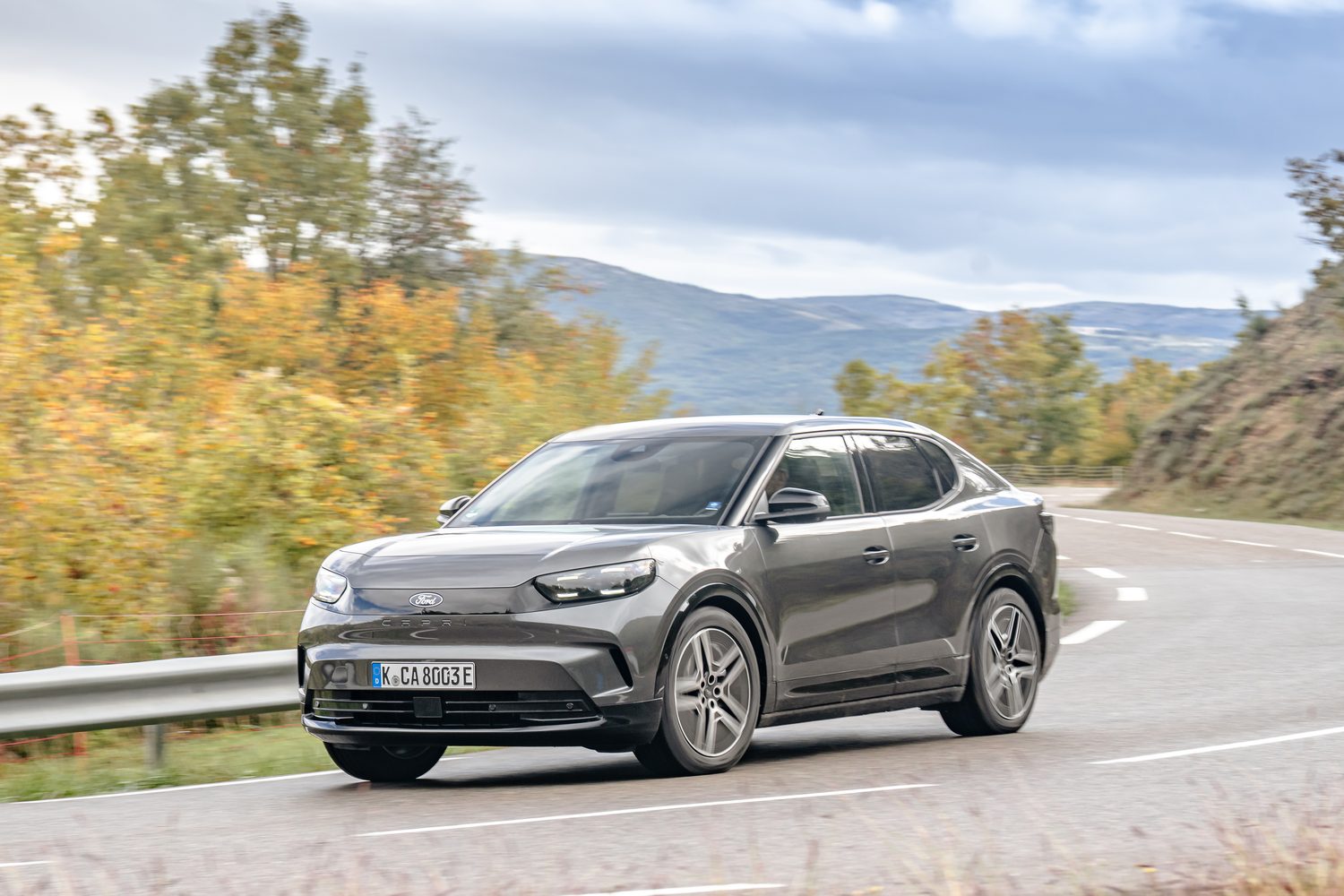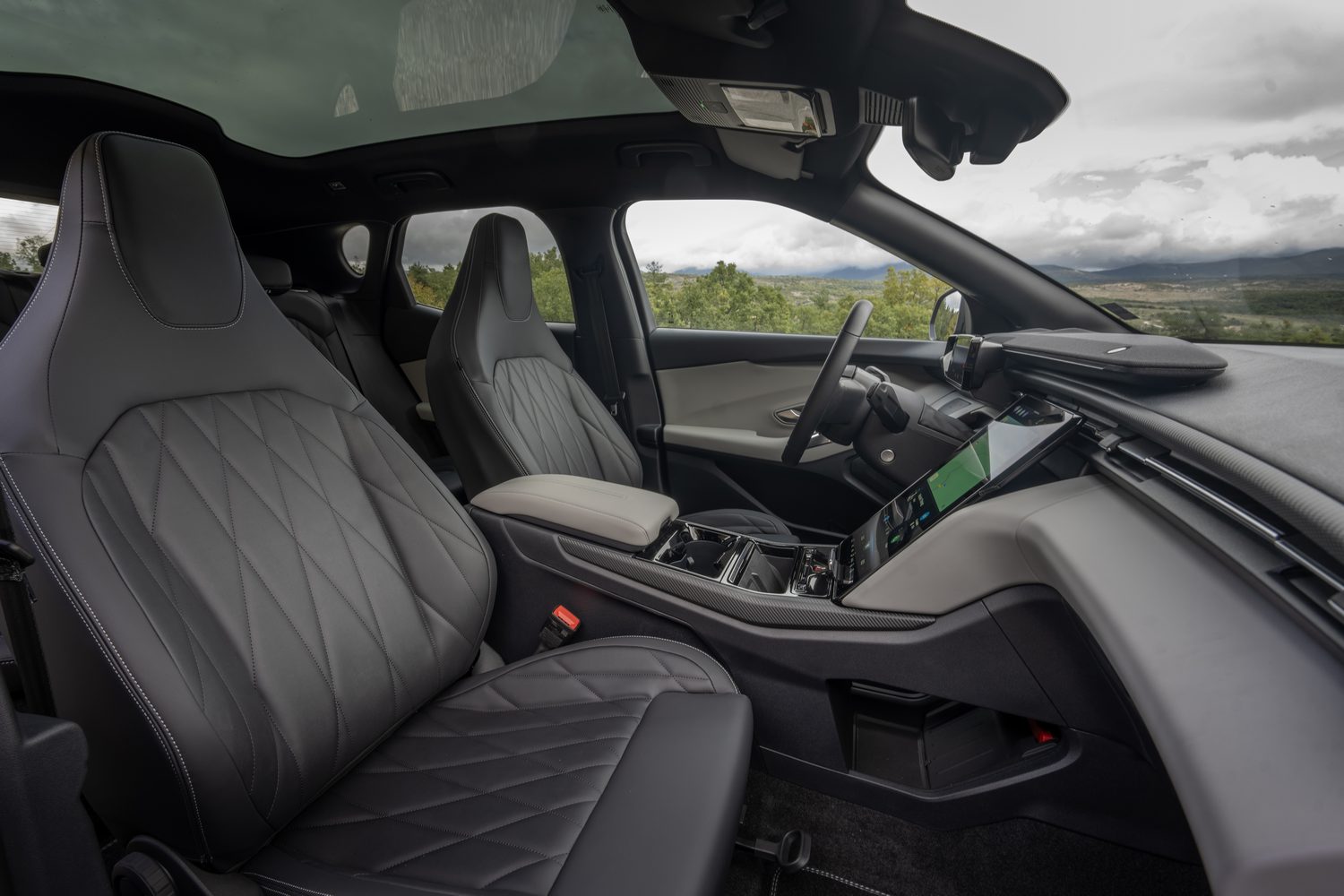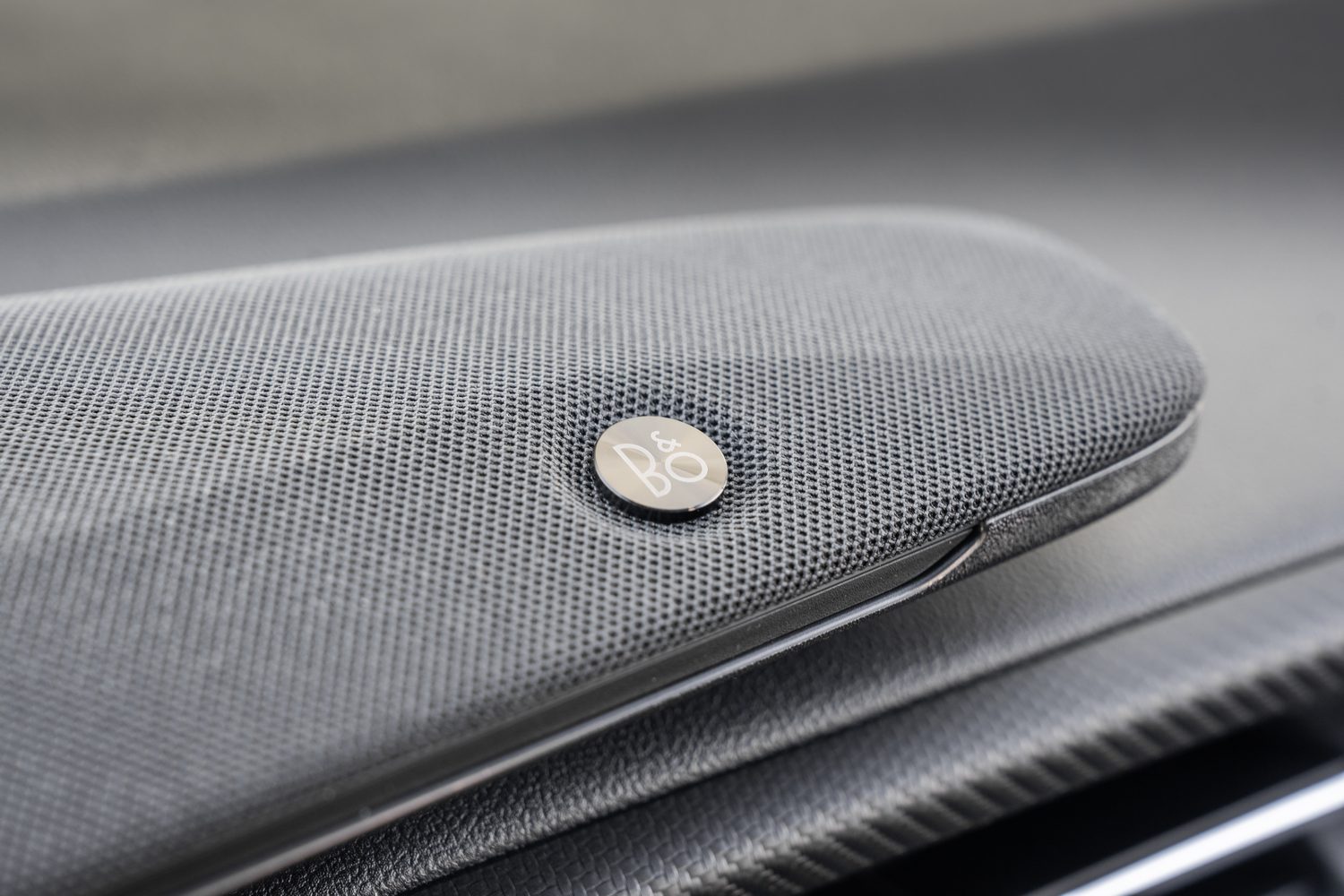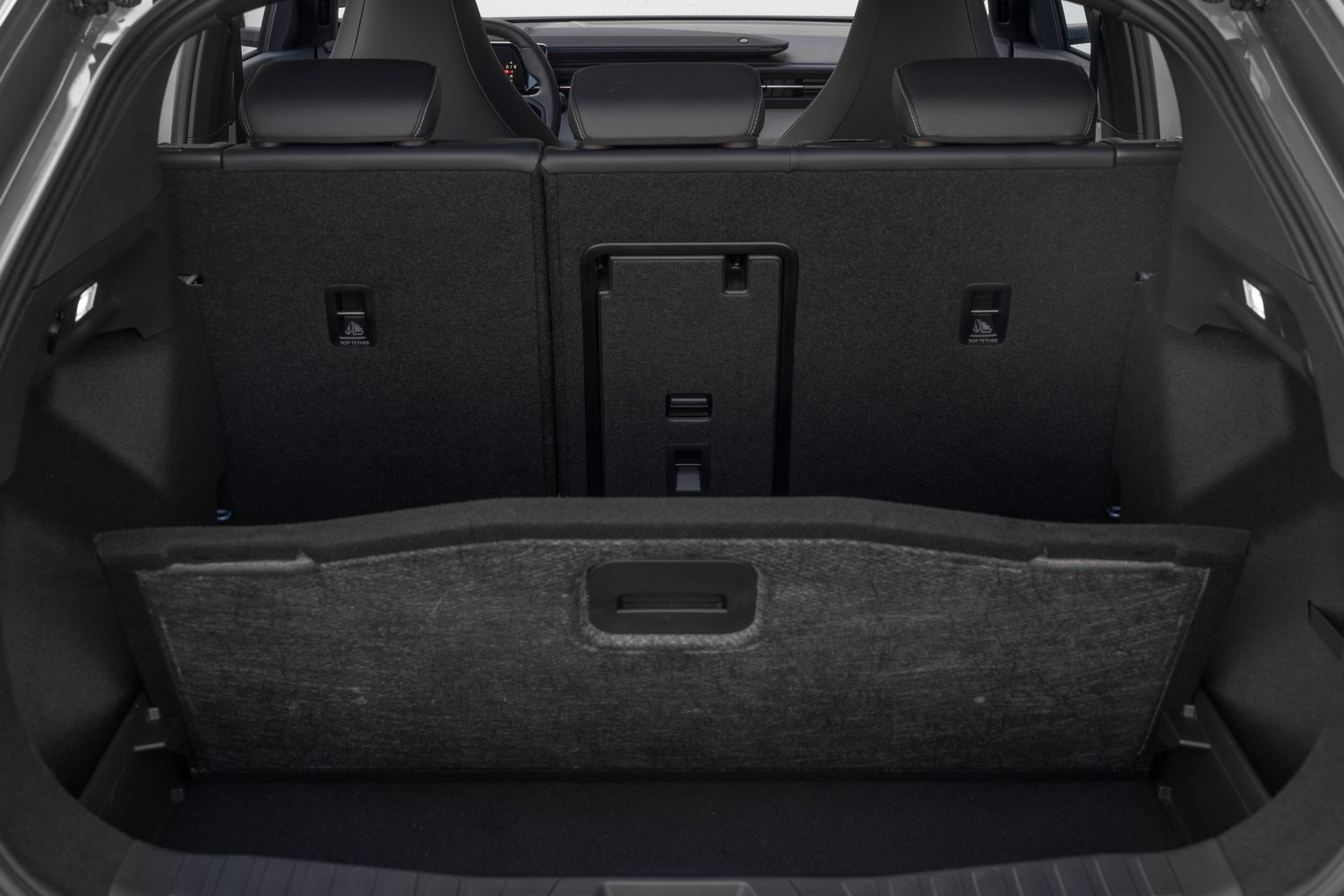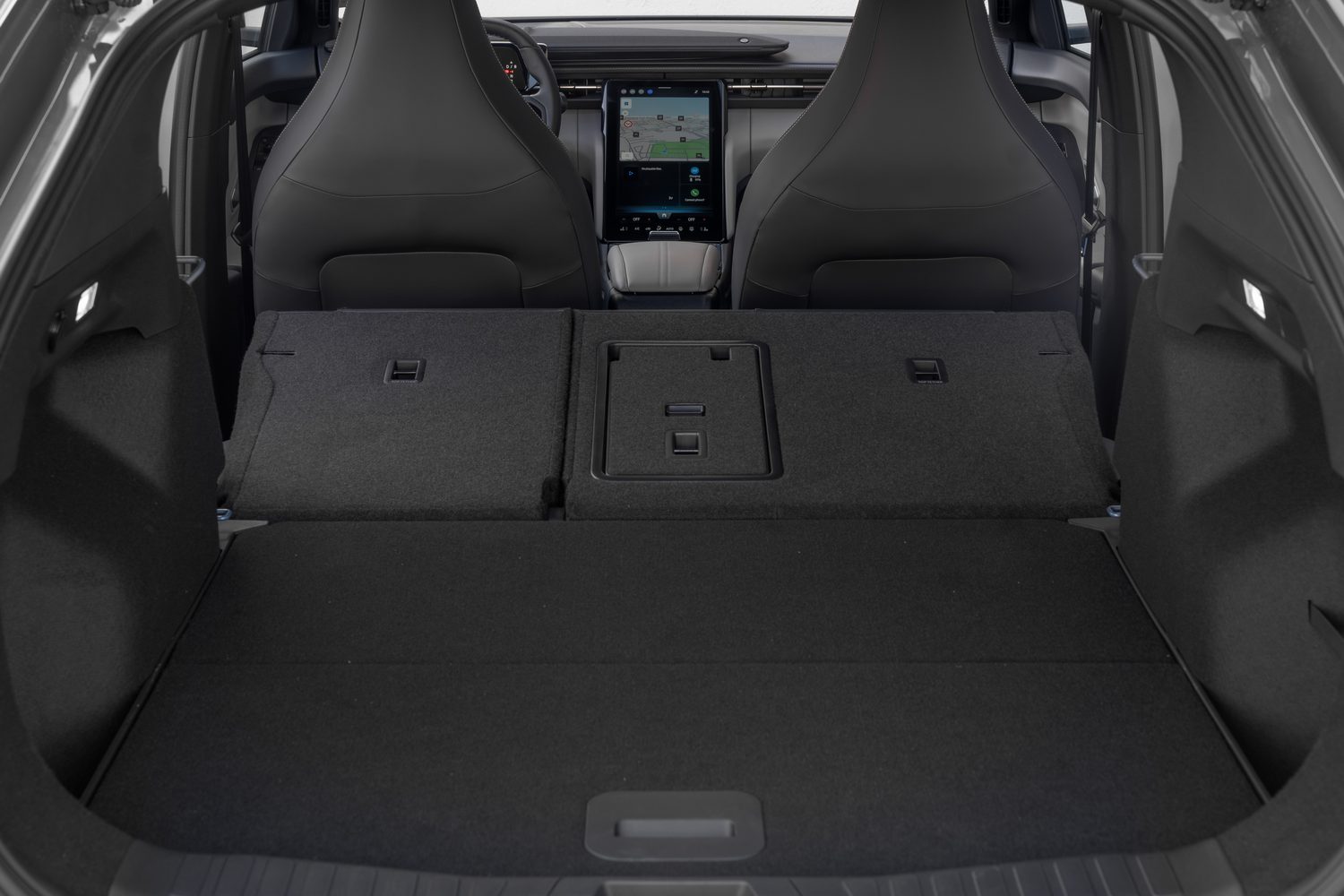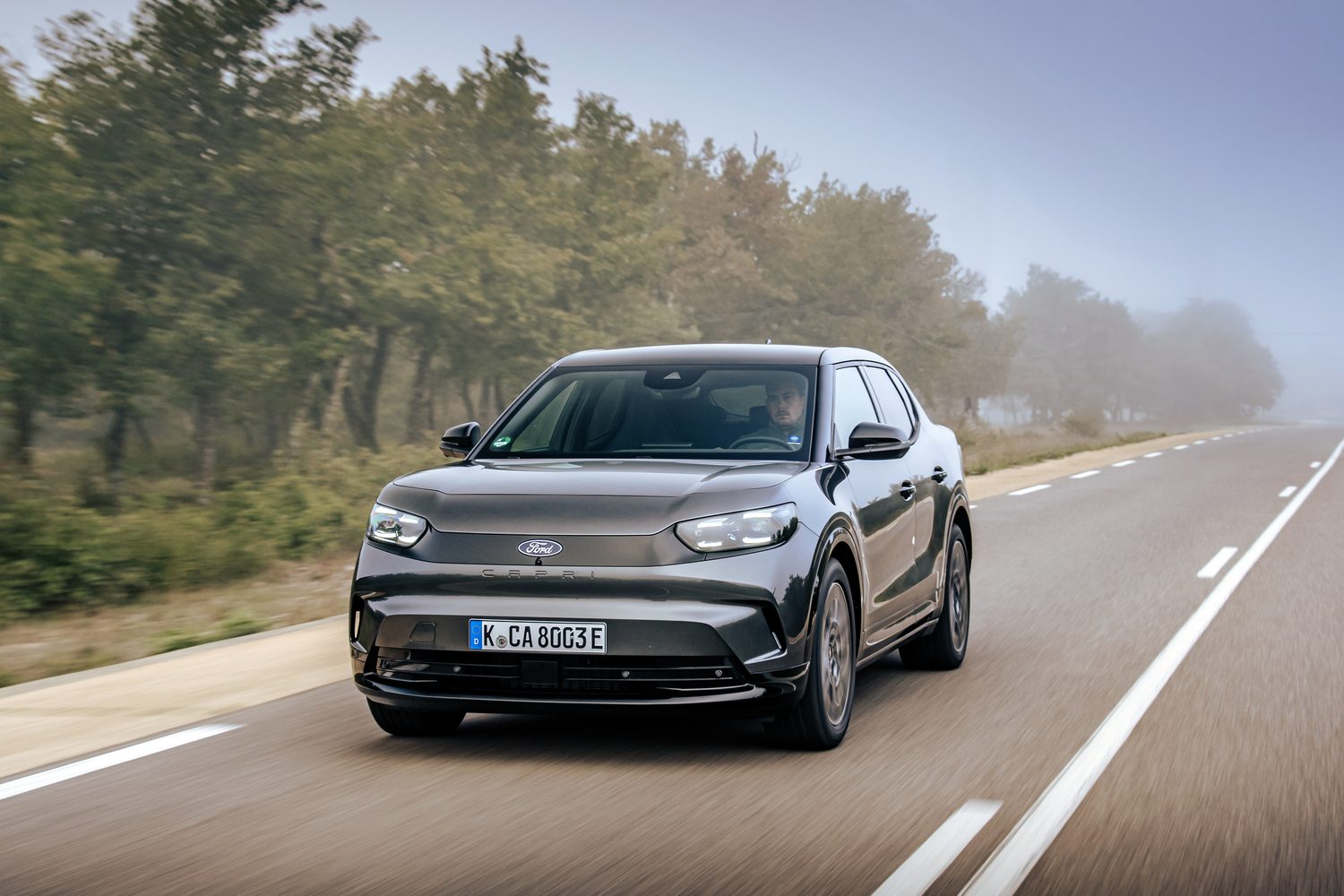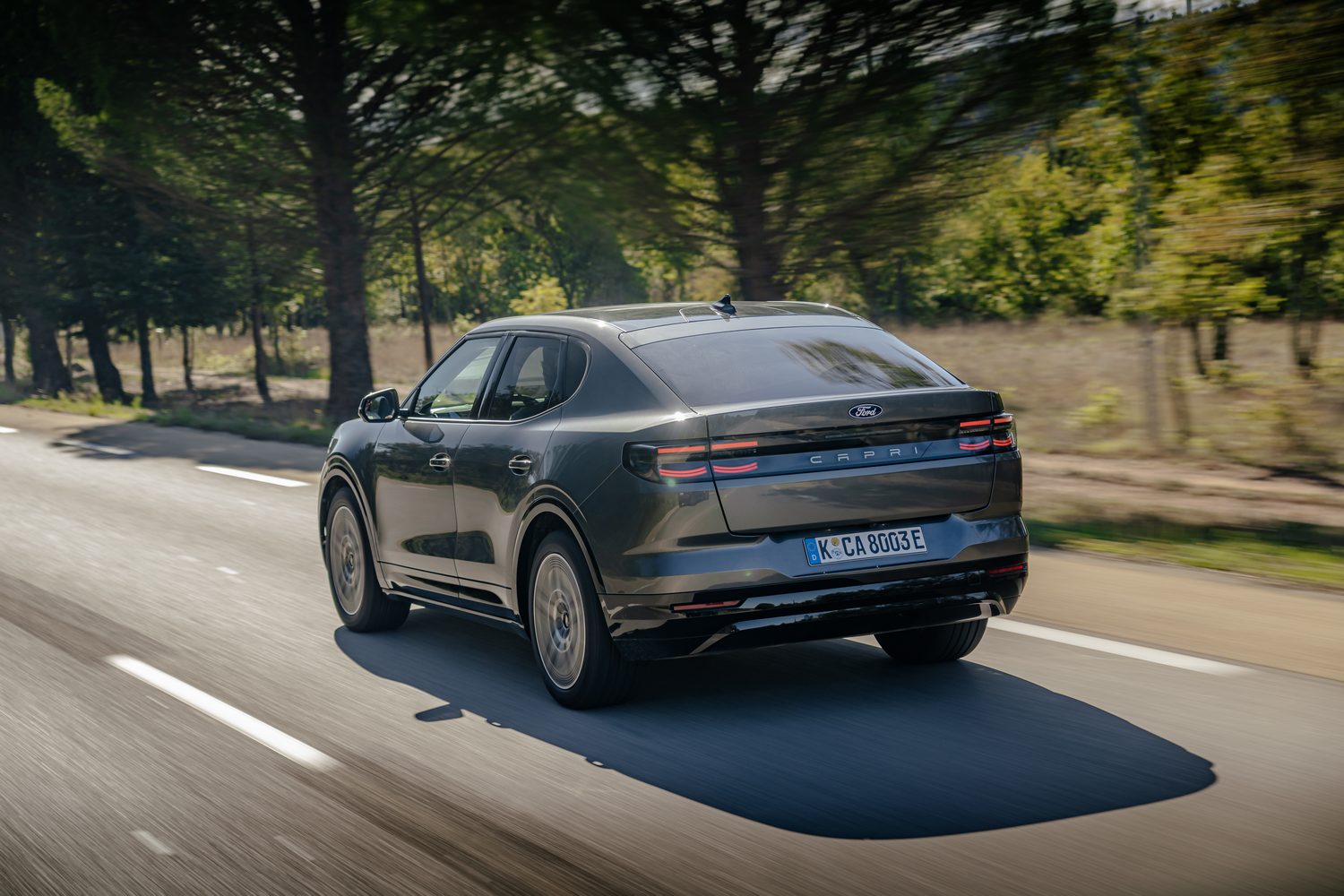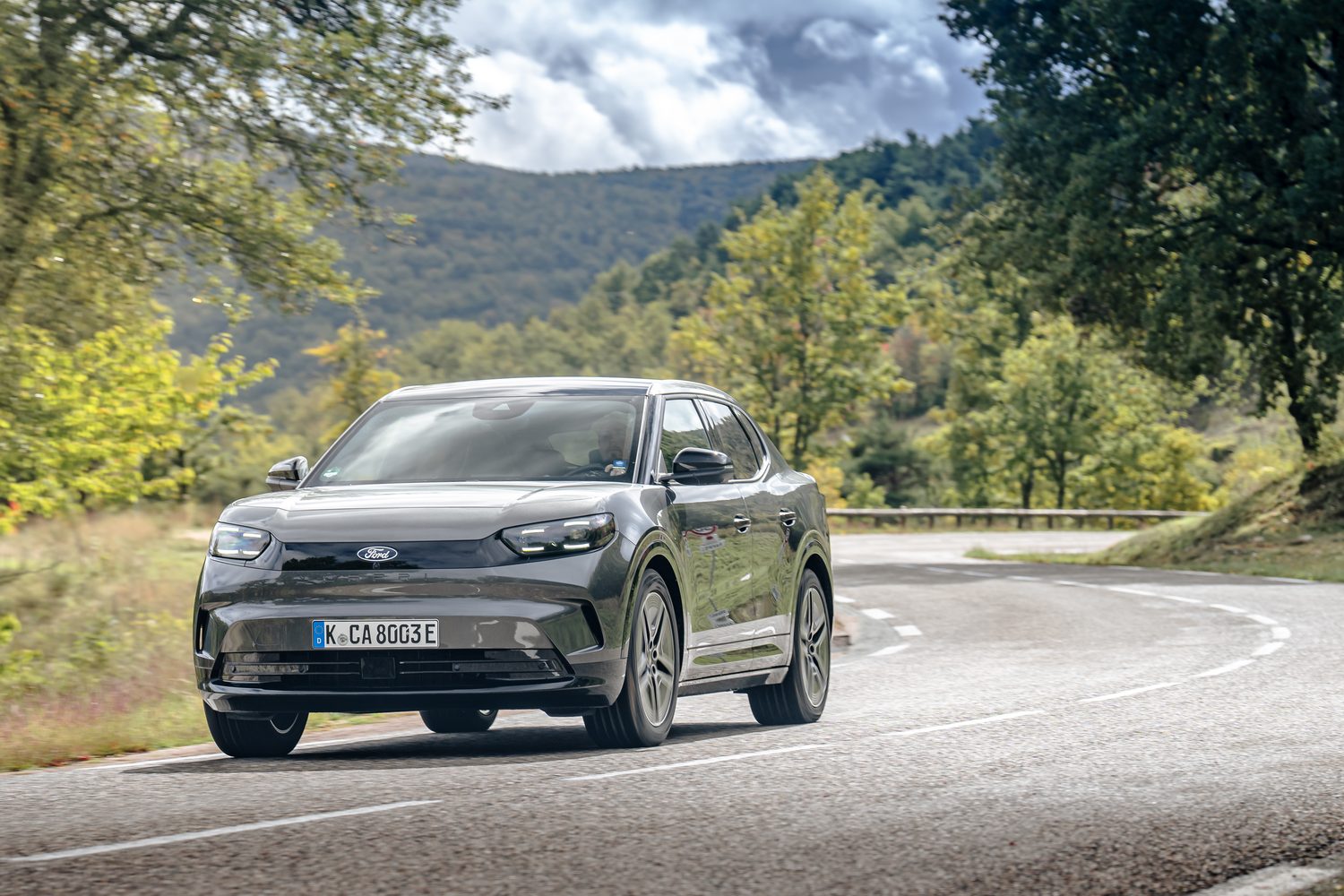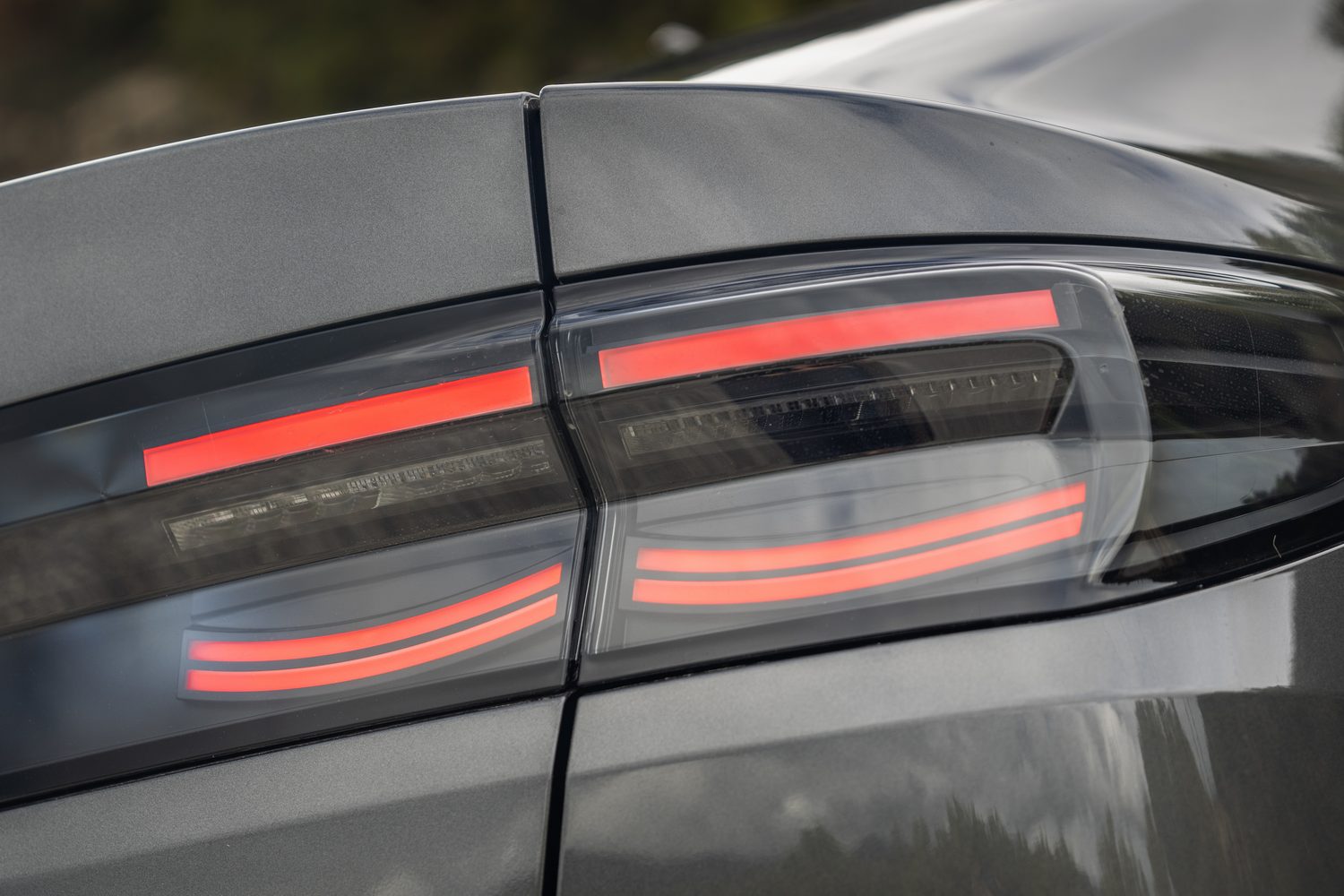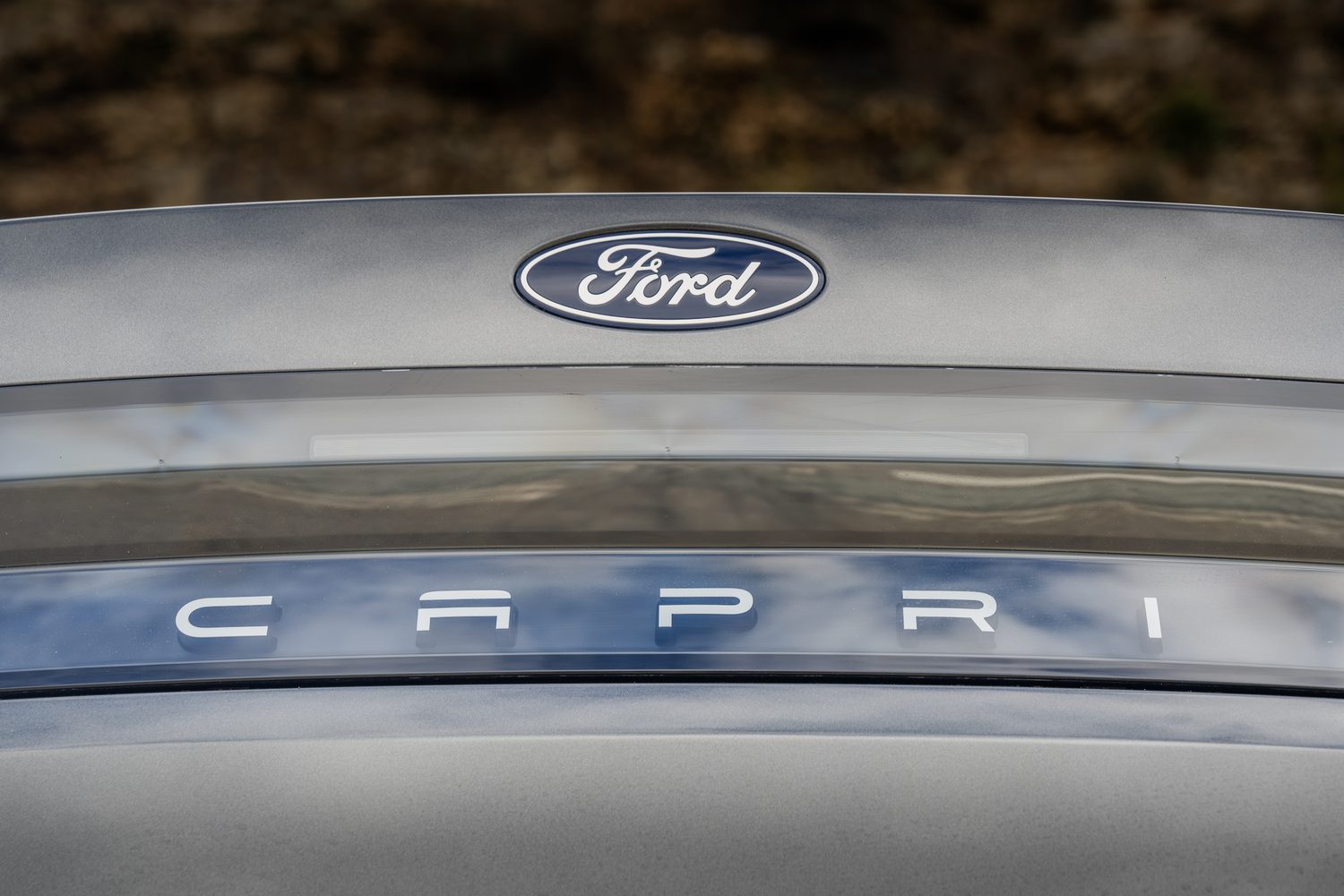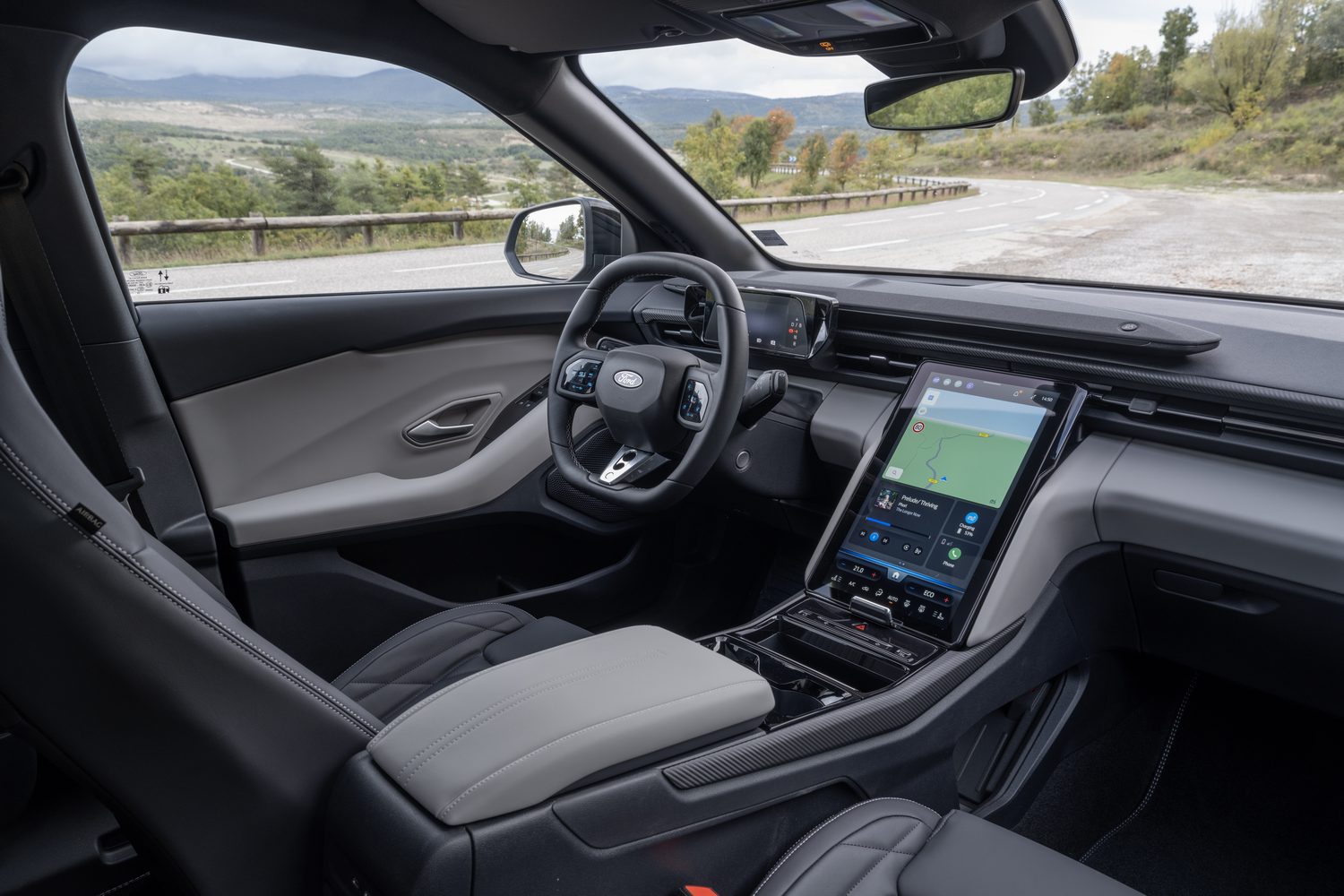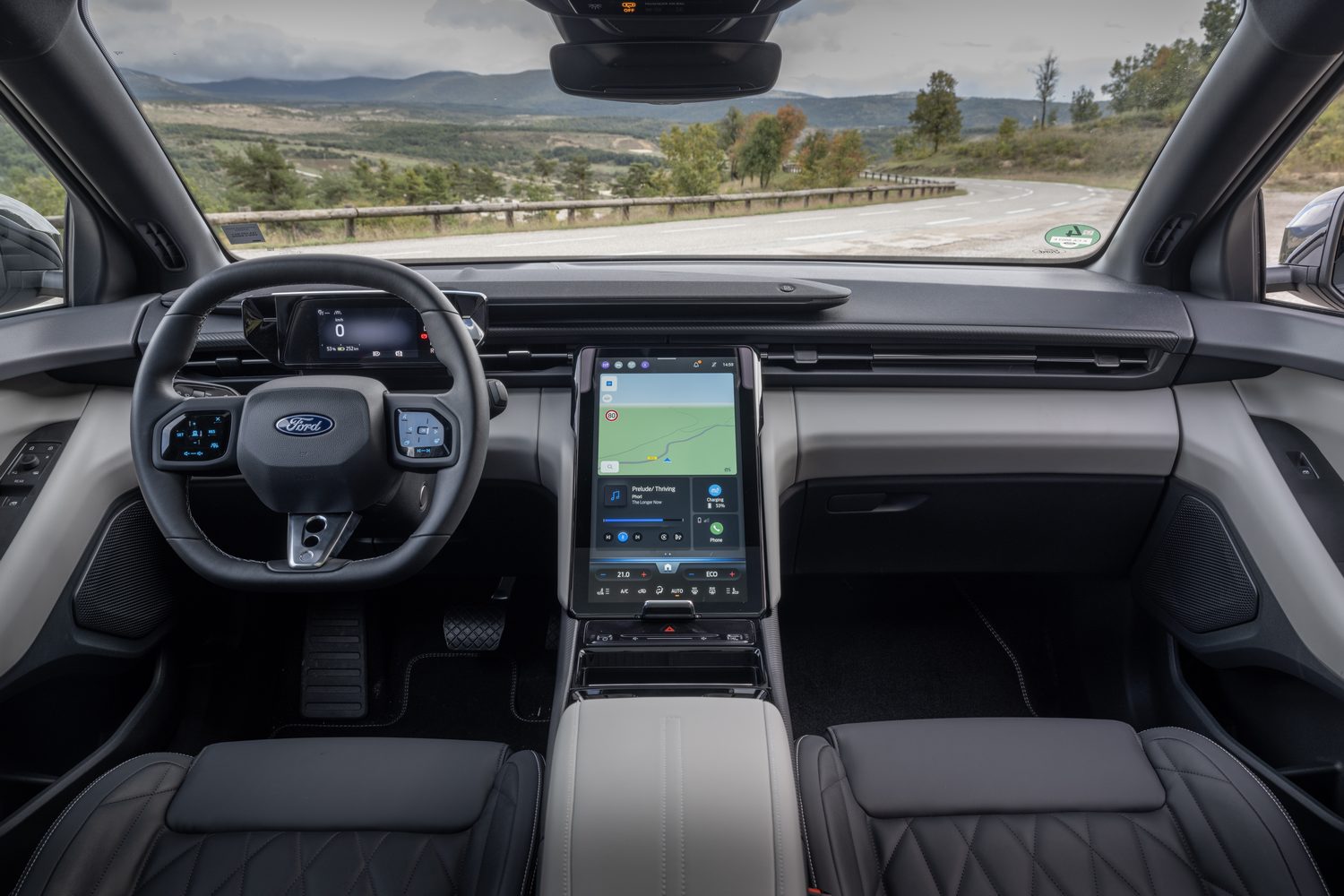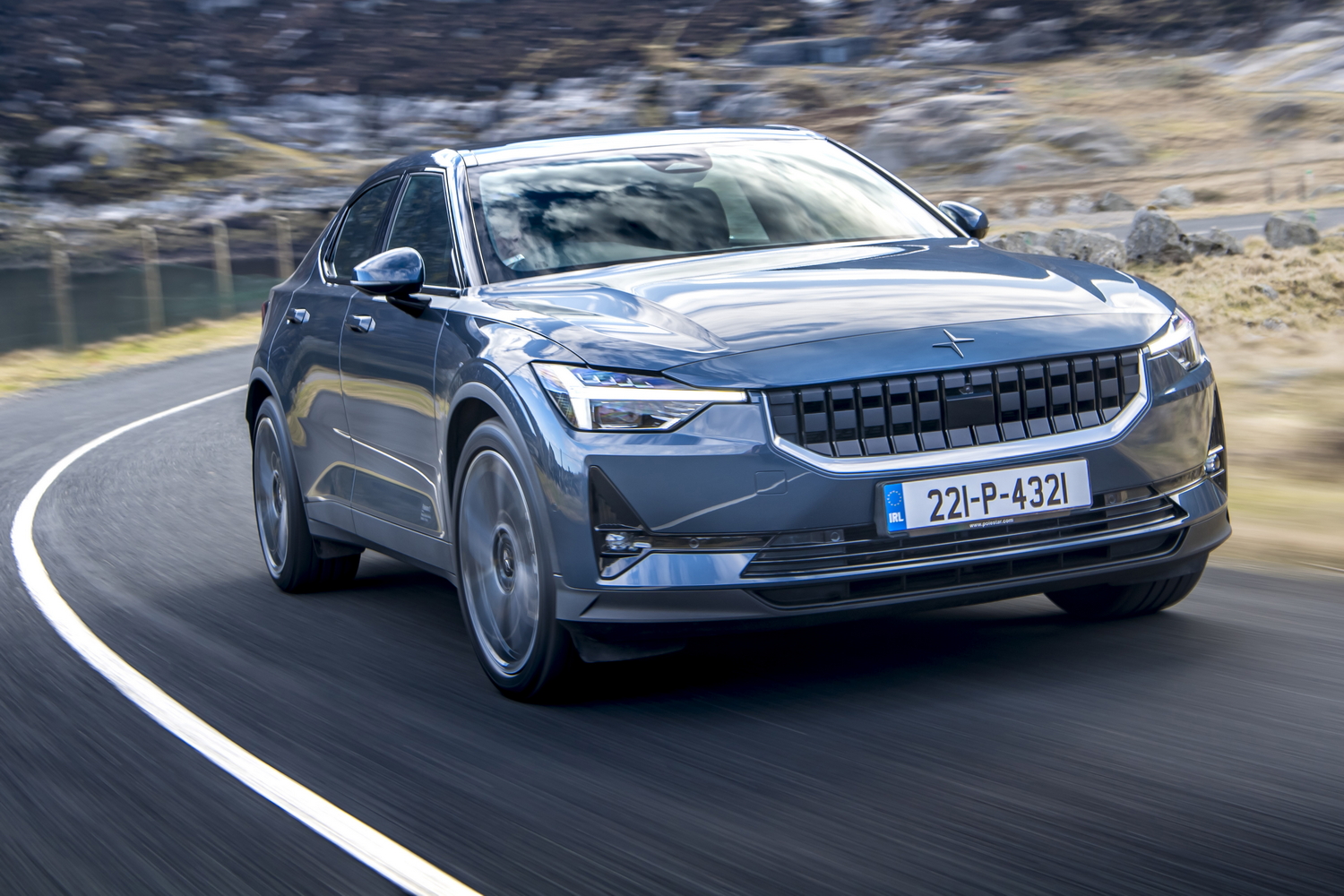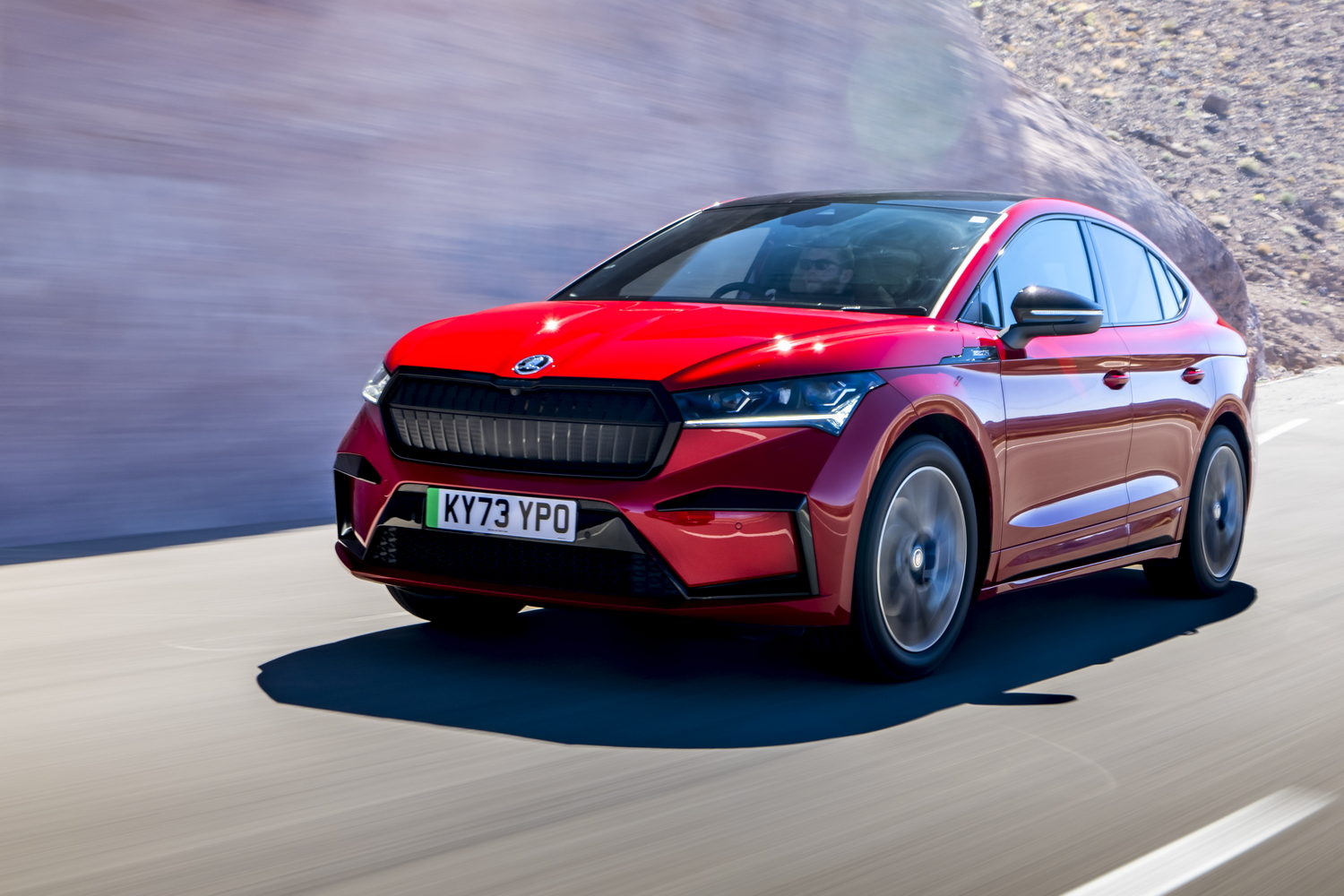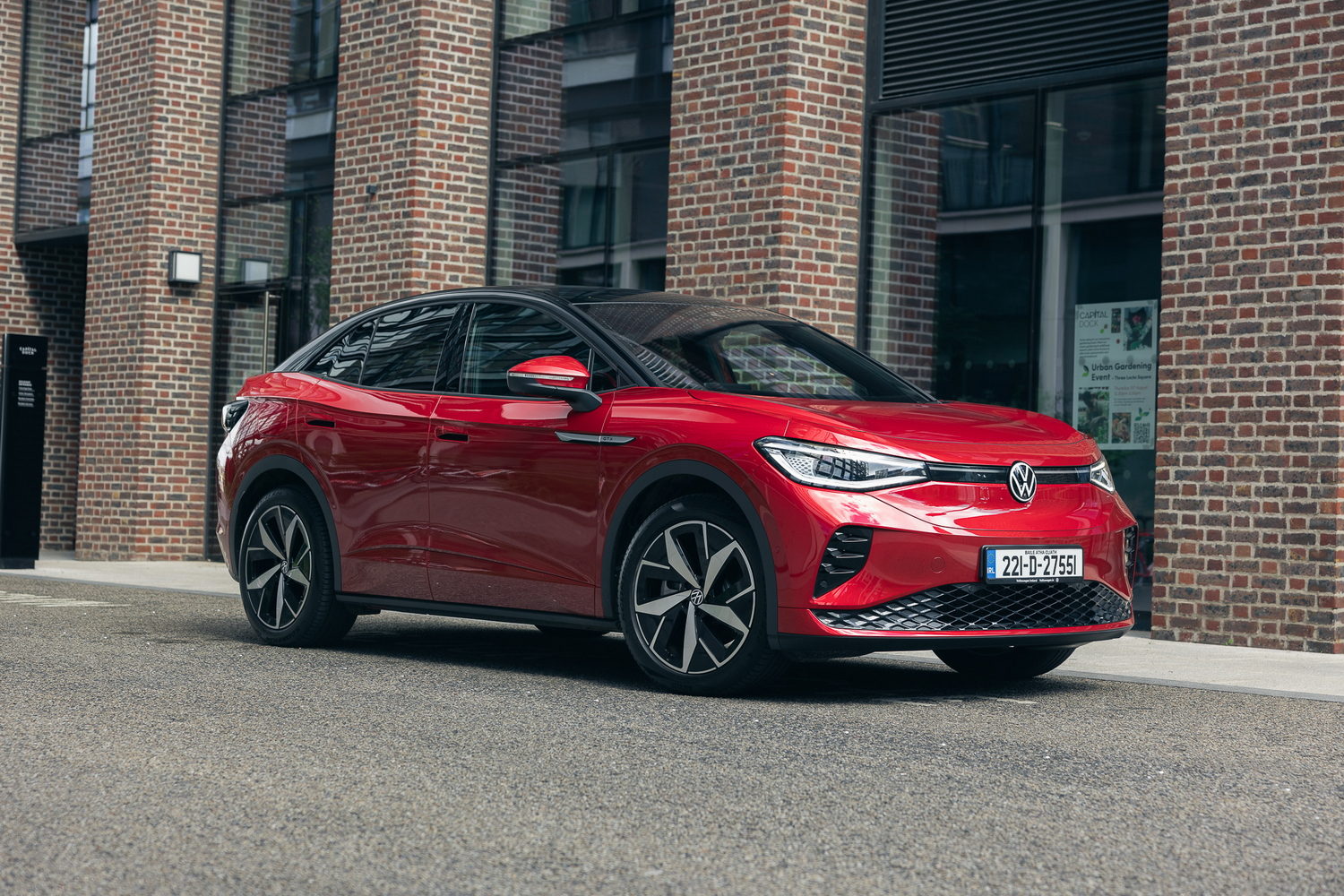There has been almost nothing but negativity in social media surrounding the use of the Capri name on Ford’s new electric car, which distracts somewhat from the fact that Ford now has three EVs to offer its buyers when it relied solely on the Mustang Mach-E for years. Of course, it’s well publicised that Ford turned to Volkswagen to speed development of the Explorer and Capri up by using the ‘MEB’ electric platform.
As car enthusiasts we wish there were a market for a proper reinvention of the Capri in its original coupe format, but there just isn’t, and Ford, understandably, needs to produce an electric model that will sell. We reckon most of the online negativity towards the new car comes from fellow car people that care about such things and those that fondly remember the original Capri. Arguably, the new one is for a different sector of the market.
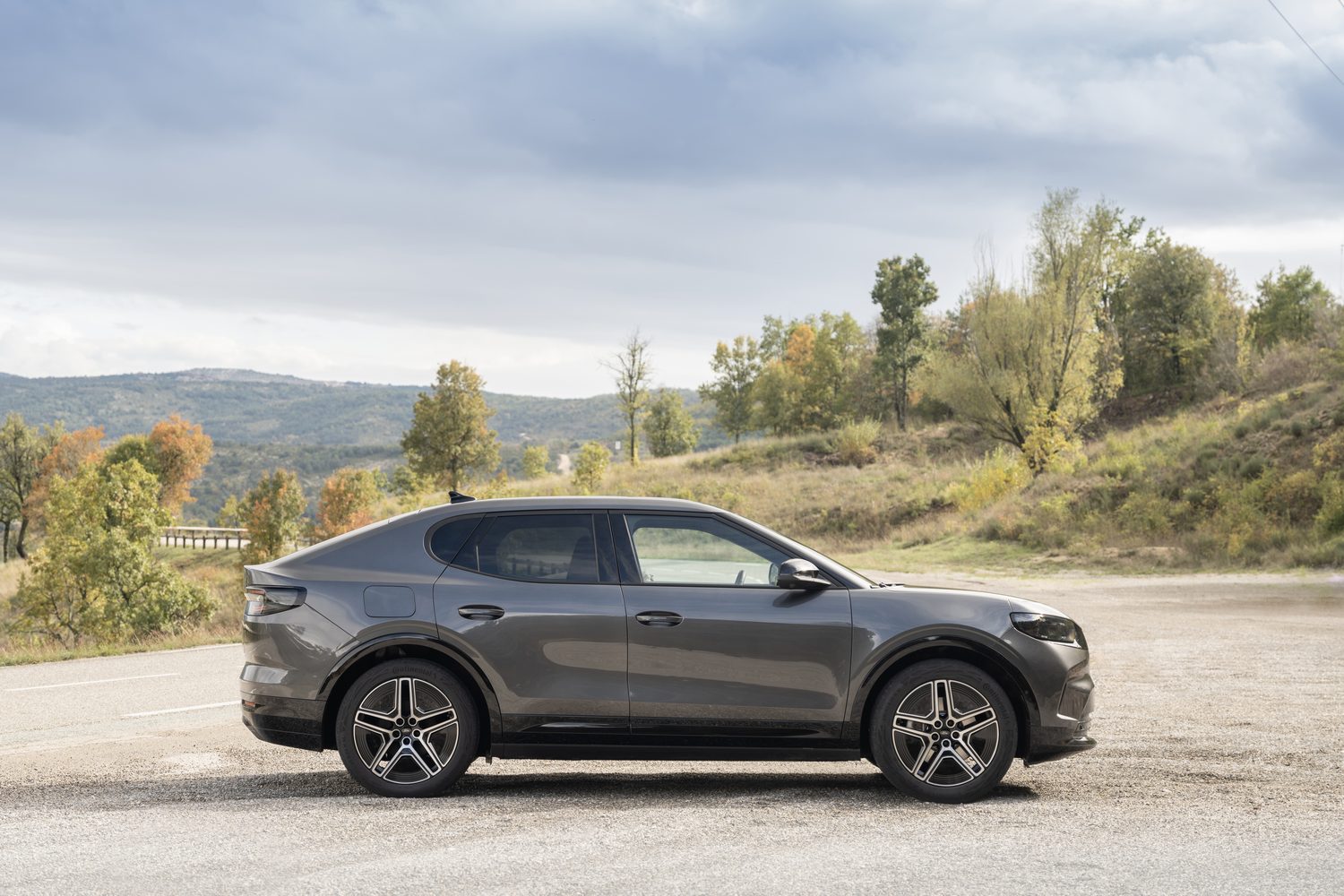
We drove the Capri for the first time at its European launch in France.
How much is the electric Ford Capri in Ireland?
Irish pricing for the new Capri starts at €45,799 including all incentives to private buyers. That’s for the entry-level Select model, 52kWh battery pack and 170hp electric motor. Standard equipment includes 19-inch alloy wheels, LED exterior lighting, electrically adjusted driver’s seat, heated front seats, rear privacy glass, wireless phone charger, adaptive cruise control, keyless entry and start, dual-zone climate control, rear-view camera, front and rear parking sensors and a 14.6-inch touchscreen.
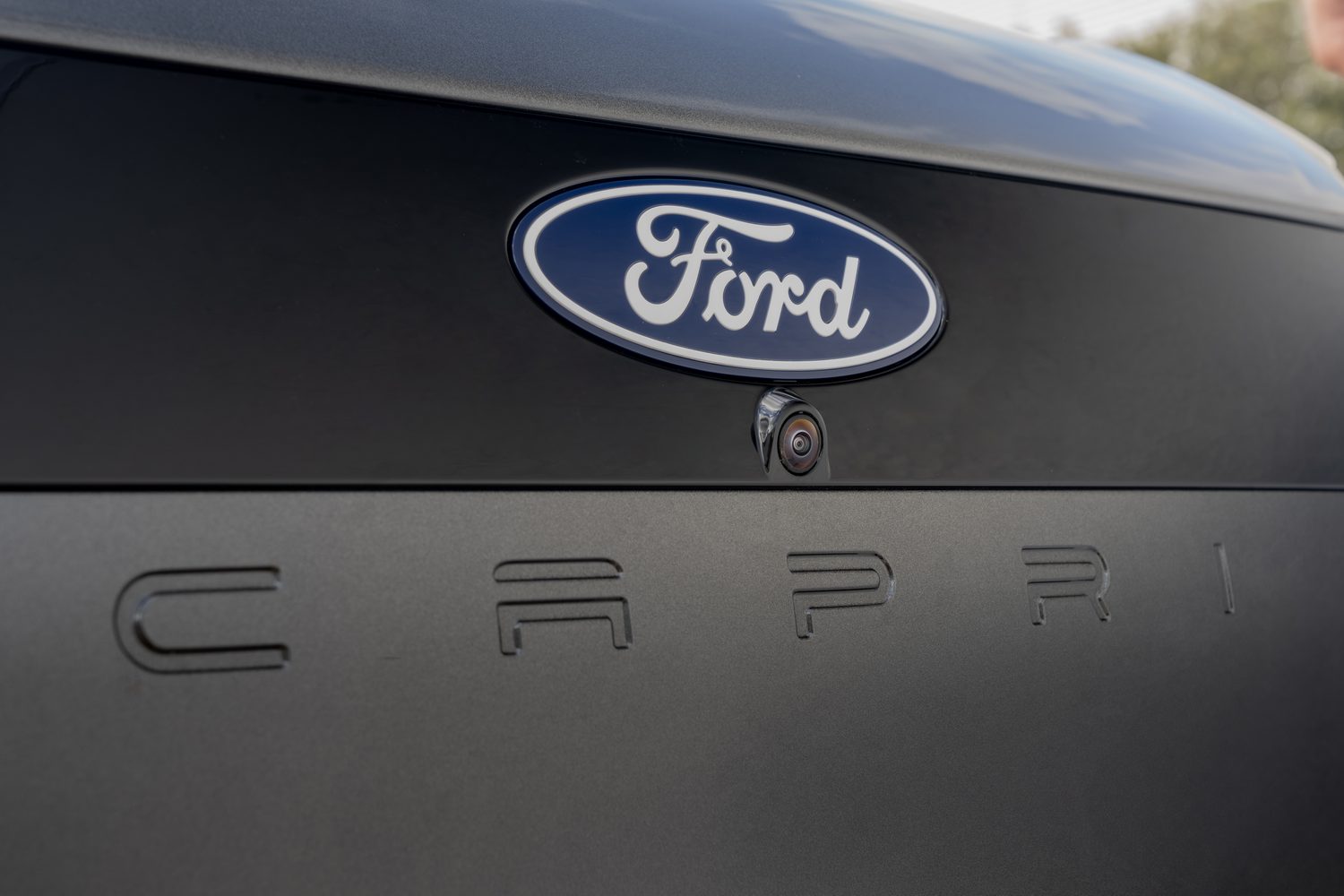
The Premium trim costs €49,990 with the same battery and motor, adding equipment such as 20-inch wheels, Matrix LED headlights, an upgraded B&O sound system, ambient lighting, panoramic glass roof, powered tailgate and upgraded upholstery.
Both Select and Premium specifications are offered with a 77kWh battery pack as well, costing €47,270 and €50,990, respectively.
Does the new Ford Capri look like the old one?
Not really in truth, though Ford’s designers have attempted to reference the original in some of the detailing. The angle taken in the media material is that the new car is how Ford’s designers reckon the Capri would have looked today if it had stayed in continuous production and evolved with the times.
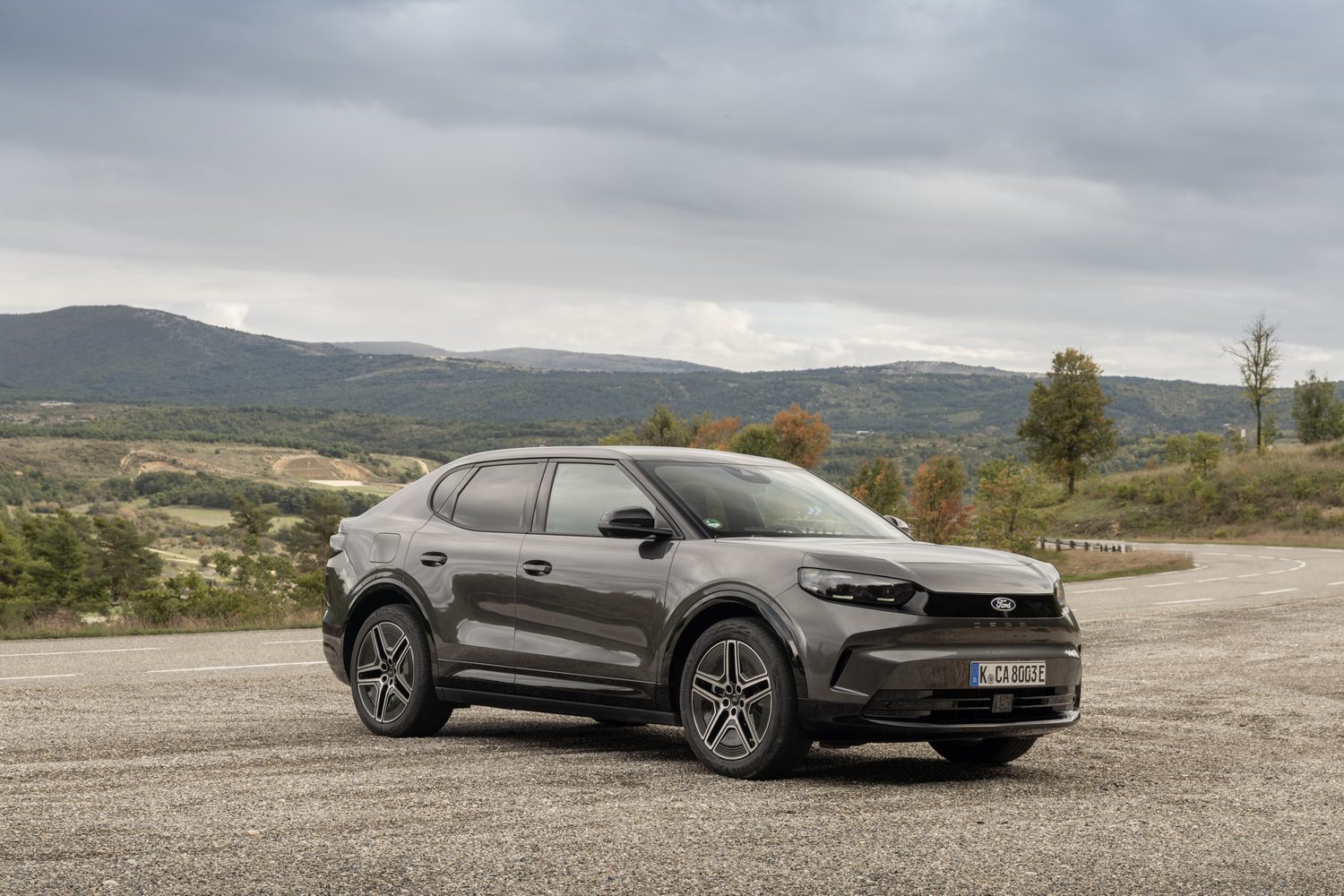
While the front of the new car is notably smooth and curvy, the black strip between the lights and the four LED headlights were inspired by the Capri of the 1980s, which had four circular headlamps inset in a black rectangle with horizontal grille slats.
An attempt to make the new Capri look a little coupe-like is obvious in profile, where the black A-pillars and door mirrors work with the side glass to contrast against the body-coloured roof above. The shape of the glass behind the rear doors was influenced by that of the original Capri.
And at the back there’s another vaguely retro touch to the black strip that incorporates the rear lights - again a modern take on four individual lamps.
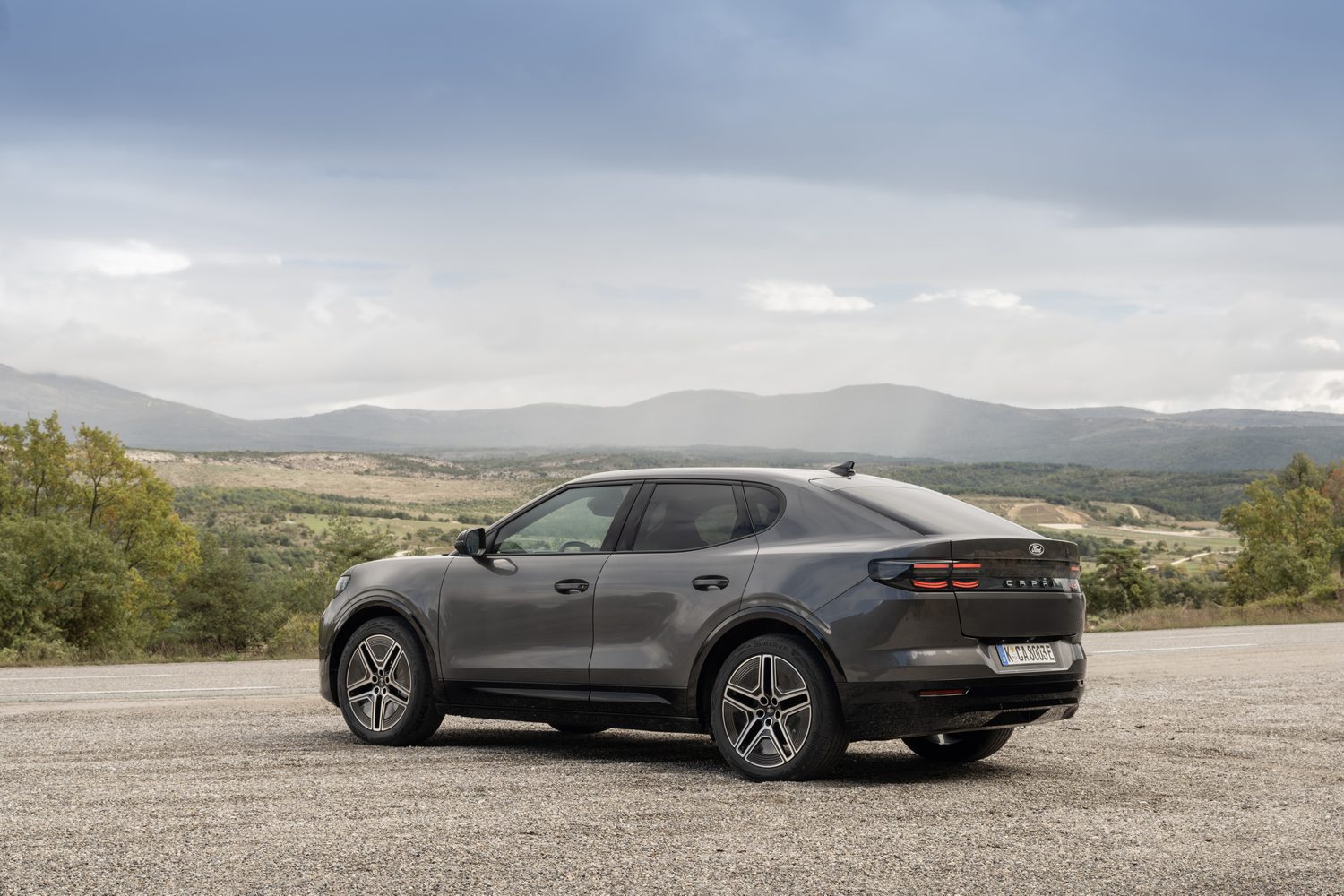
This all makes a bigger impact when the new Capri is finished in the bright ‘Vivid Yellow’ signature paint colour, and is rather lost when the car is grey as our test car was.
How big is the new Ford Capri?
The new Capri is 4,634mm long, 1,946mm wide (when the door mirrors are folded), 1,626mm tall and it has a 2,767mm wheelbase. By way of comparison, the Ford Explorer’s equivalent dimensions are 4,460mm, 1,870mm and 1,600mm, and it’s on the same wheelbase. The Volkswagen ID.4’s wheelbase is just a millimetre longer and its overall length positions it between the Explorer and Capri at 4,584mm. The VW is 1,852mm wide and 1,612mm high.
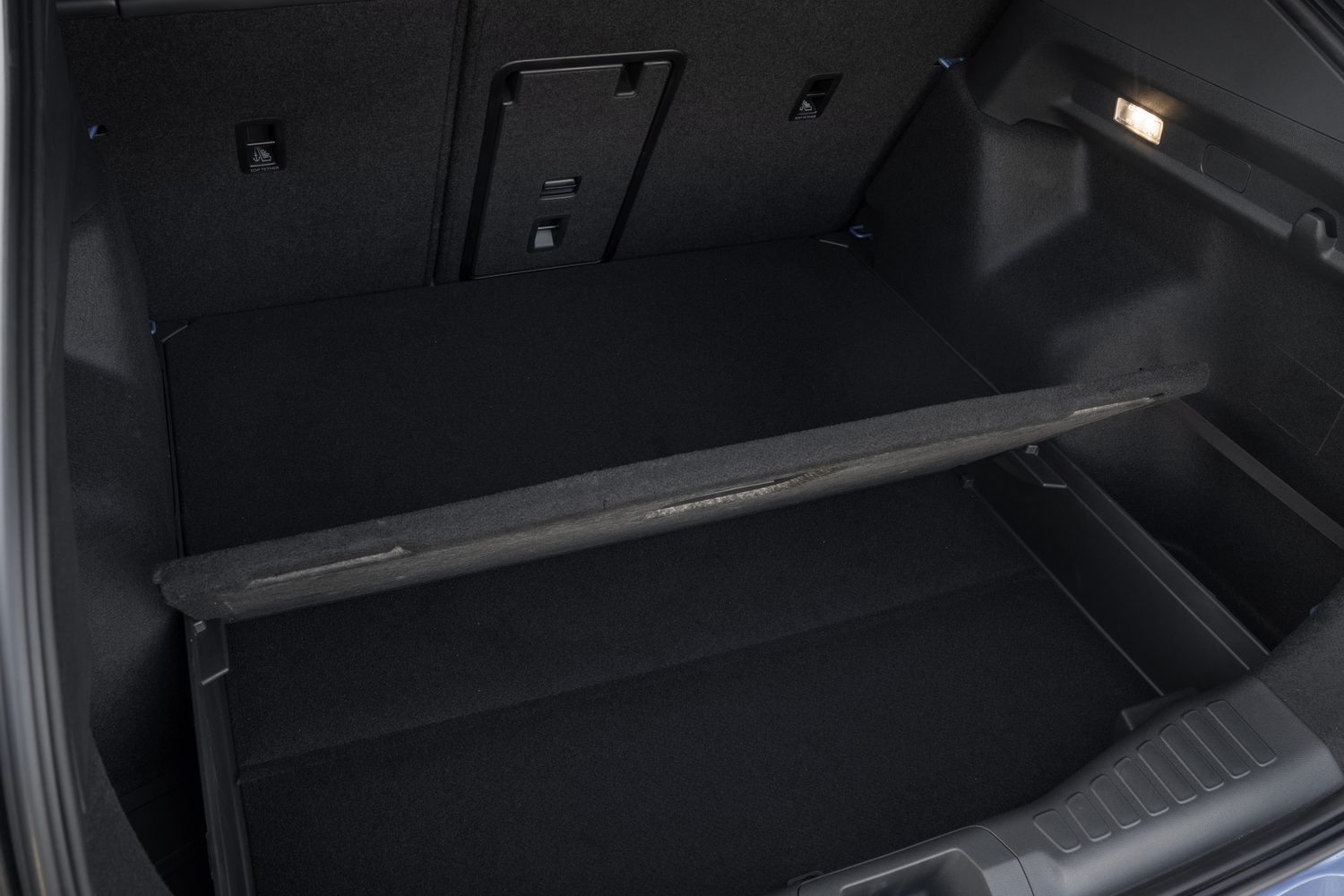
Interestingly, the Ford Mustang Mach-E measures 4,739mm long, 1,881mm wide and 1,621mm high, on a wheelbase of 2,984mm so it’s clearly the larger of the Ford EVs, justifying its higher price point in Ireland.
Ford quotes a turning circle of as small as 9.7 metres for the rear-wheel-drive Capri, a figure we don’t focus on very much, but that’s incredibly tight for a car of this size and you can really feel the benefit of it when manoeuvring.
On the subject of practicalities, the Capri can tow up to 1,000kg of braked trailer and, despite the sloping roofline, has a larger boot than that of the - supposedly more sensible - Ford Explorer. The entry-level Capri accommodates up to 572 litres to the top of the rear seat backs (or 627 litres to the roof), including space under the movable boot floor. That area can be configured to have far more space than you’d need for charging cables. There is no extra storage under the bonnet up front, though.
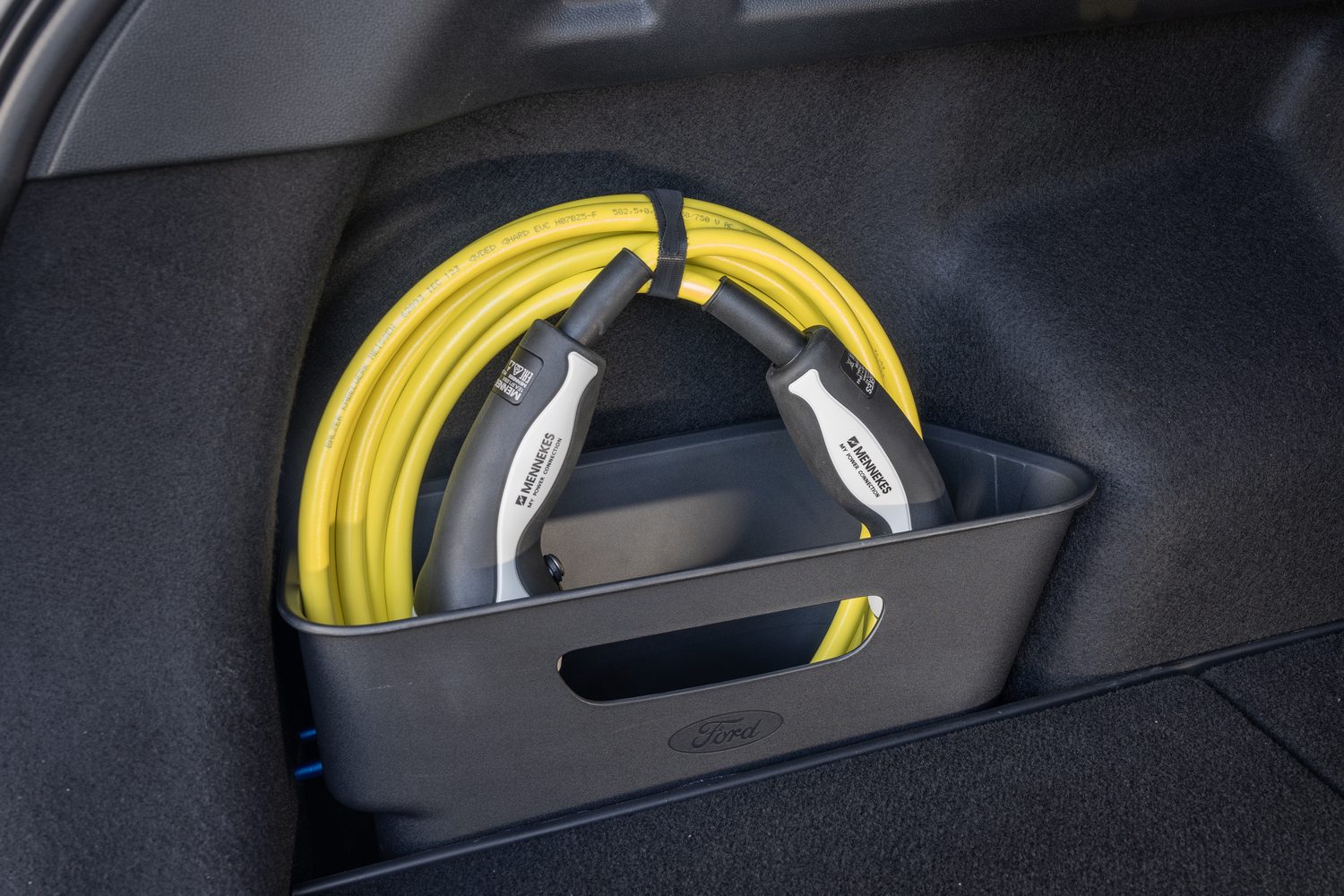
There are storage ‘baskets’ at the sides of the boot and of course the rear seat backs split and fold down. When the boot floor is in its highest position, it forms a flat surface with the folded seat backs. Ford quotes a maximum volume of 1,510 litres. Incidentally, the Premium model loses a small amount of space due to some of its extra equipment, though usefully gains an electric tailgate.
A look inside the electric Ford Capri
The tallness of the Capri makes getting into the driver’s seat easy and there’s plenty of adjustment in the driving position to help you get comfortable. While doing that you’ll notice the squared-circle steering wheel. It looks a little odd but feels good in your hands. One of the few retro details inside is the design of the metallic-looking bottom spoke of the steering wheel. Shame Ford didn’t stick with ‘old-school’ physical buttons for the other steering wheel spokes though, as the touch-sensitive ones aren’t great to use.
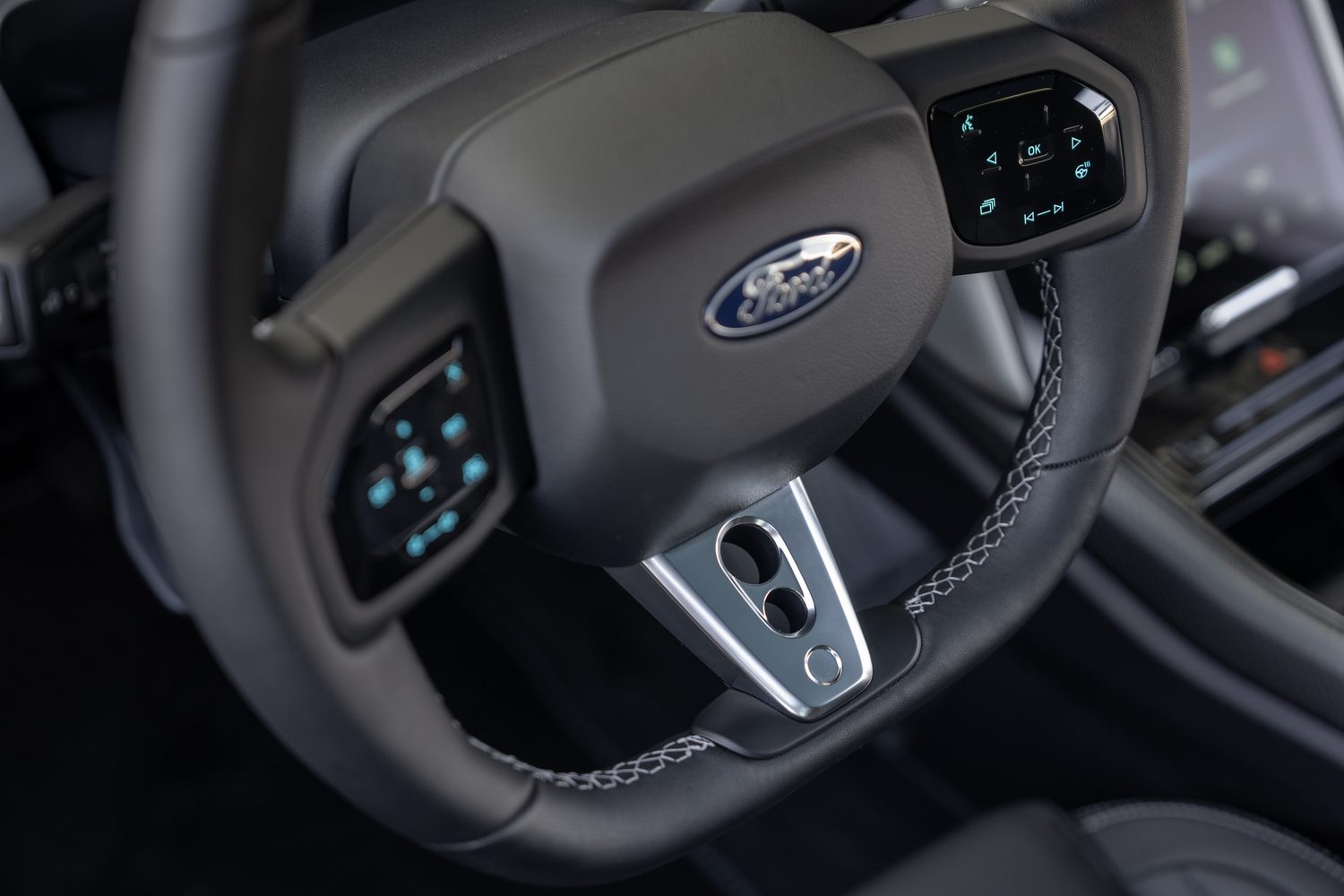
Carried over from the Volkswagen ID models are the headlight controls, the electric window switches (unfortunately retaining the design in which two switches are used to control front and rear windows with a fiddly touch-sensitive pad to select between them) and the more successful twist-to-go drive selector mounted on the steering column. Behind is simple, compact digital instrumentation and, if you’ve gone for the Premium model, the cool B&O soundbar atop the dashboard.
There are impressive-looking - and very comfortable - seats up front, and some clever design at work between them. At a glance it looks much like any other centre console, but under the padded armrest is a huge amount of space - and it can be reconfigured to accommodate big items such as a laptop or handbag, safely out of sight. There are the expected two cupholders, a double-phone holder with wireless charging pad, two USB-C ports and a little extra space underneath all that for odds and ends.
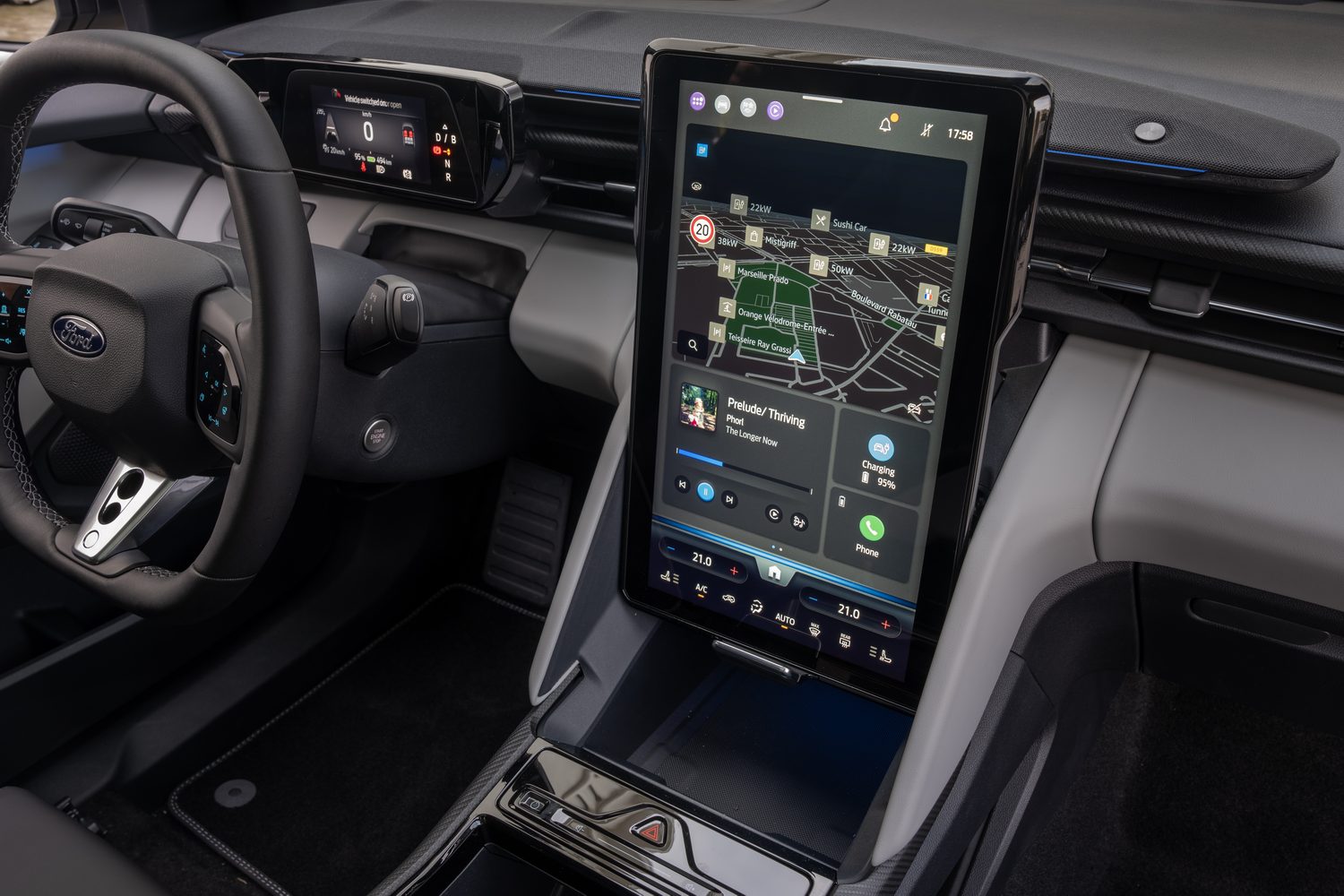
Meanwhile, the tall upright touchscreen - more on which below - can be tilted depending on the angle of the sun to reduce glare, and in the process reveal another hidden storage area behind. It’s not massive, but you could stash a phone and wallet there for example.
Access to the rear seats is stymied by the relatively short back doors, though space once you’re inside is decent enough. There’s a flat floor all the way across and though the seat base is more sculpted for comfort in the outer two positions, it is possible to get an adult into the middle if needs be. In fact, that’s where headroom is at its best, as it’s restricted a little toward the sides of the car.
In the fold-down armrest you’ll find cupholders and a ski hatch, while there are also air vents for rear passengers at the back of the centre console, and two USB-C ports.
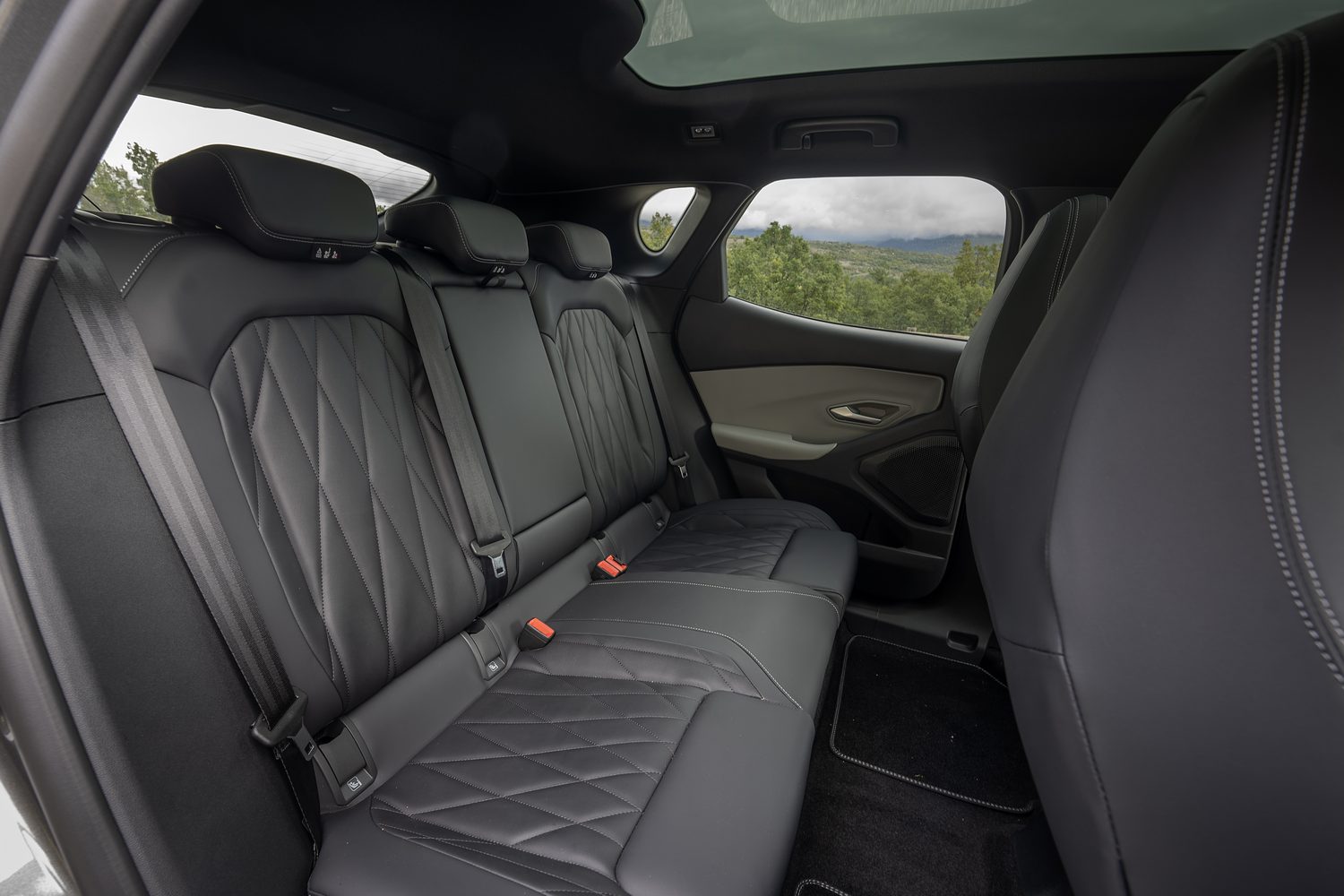
The electric Ford Capri’s on-board technology
The central touchscreen measures 14.6 inches across the diagonal and runs Ford’s SYNC infotainment software. It’s quick to respond to touch and includes ‘Connected Navigation’, though many owners will just use the built-in Apple CarPlay and Android Auto, which are both wireless.
That B&O soundbar is part of a 10-speaker setup including a subwoofer and it also features speed-sensitive volume.
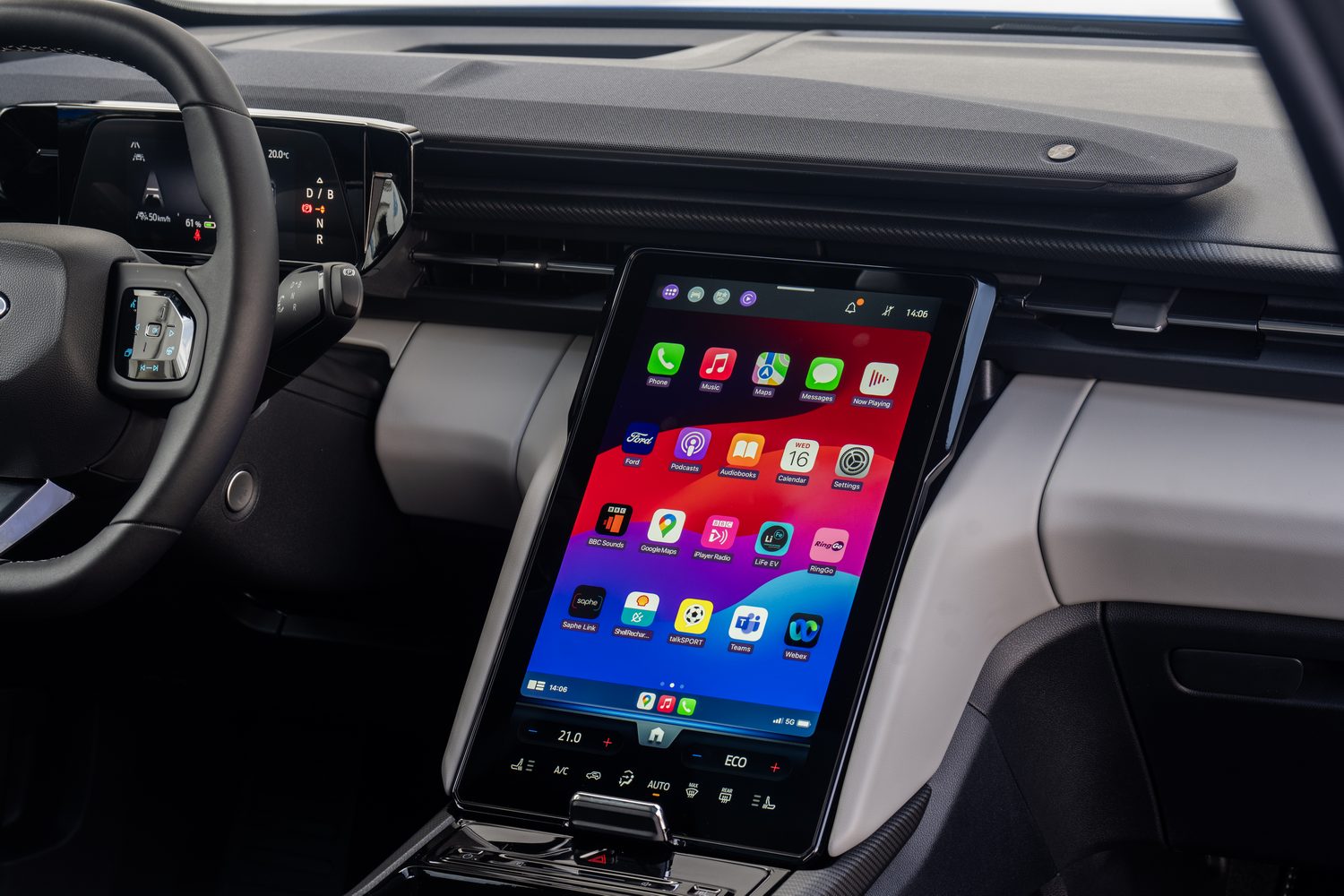
How many child seats can I fit in the electric Ford Capri?
There are two pairs of ISOFIX mounting points in the back seat - in the outer positions as usual. The gap between the buckles is likely to prevent any other boosters or child seats fitting in the middle, but parents will appreciate the generous space from the rear seat to the backs of the fronts as that eases the fitting of bulky rear-facing baby seats. Likewise, the massive boot will easily accommodate chunky travel systems and buggies.

How safe is the electric Ford Capri?
The Capri itself has not been assessed for safety by Euro NCAP, but the closely related Ford Explorer has, and it achieved the full five-star rating. Within that, the individual scores included 89 per cent for adult occupant protection, 86 per cent for child occupant protection, 80 per cent for protection of vulnerable road users and 72 per cent for ‘Safety Assist’.
To achieve that same level, the Capri comes as standard with a blind-spot warning system, Clear Exit Warning, Cross Traffic Alert with Active Braking, driver alertness monitoring, Evasive Steering Alert, front and rear parking sensors, adaptive cruise control, lane-departure warning, lane-keeping aid, Pre-Collision Assist, Reverse Brake Assist and Wrong Way Alert.
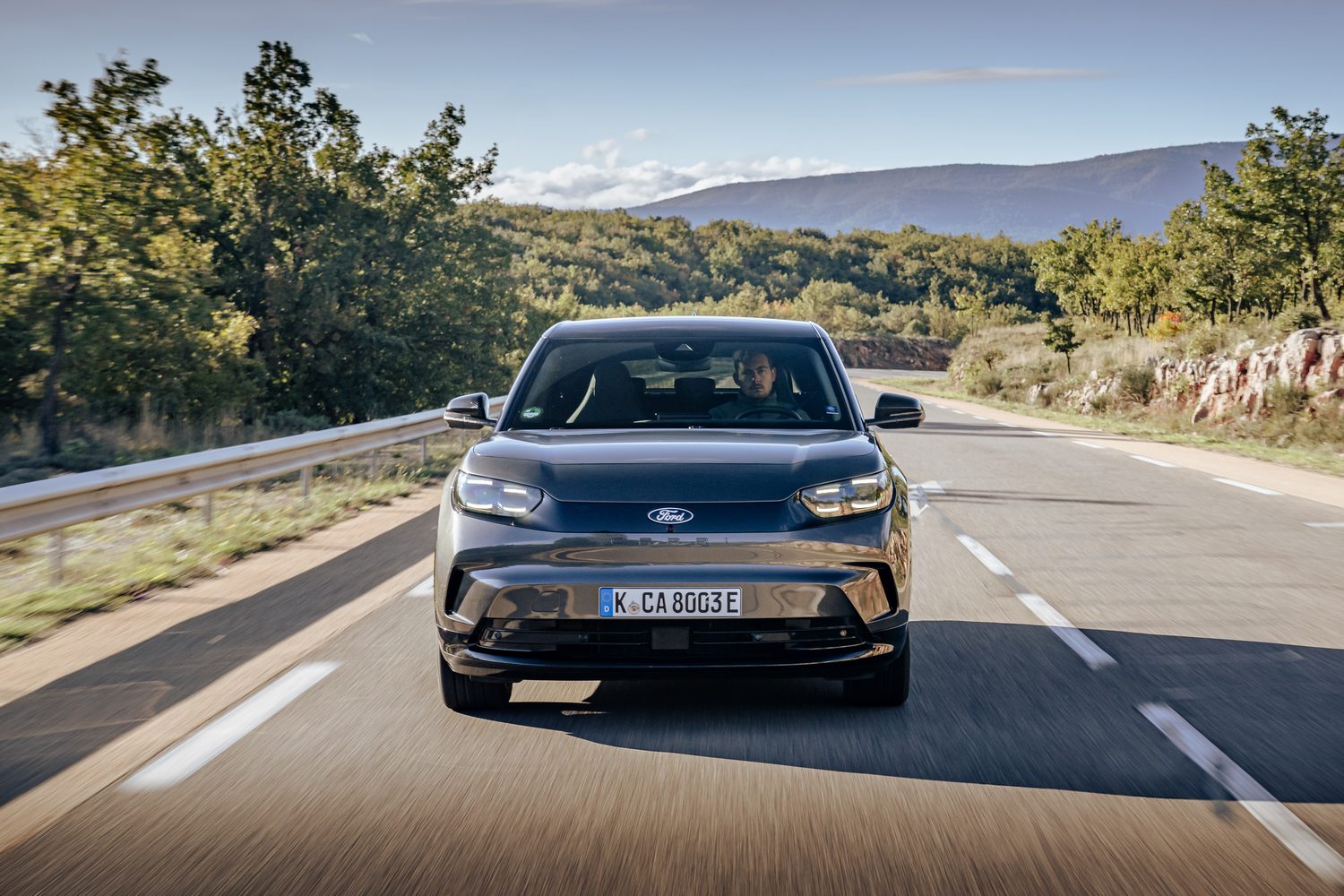
There’s an optional upgrade pack that adds a 360-degree camera system, head-up display, Active Park Assist, Lane Centring and Assisted Lane Change worth having for the first two items on that list.
Driving the electric Ford Capri
Leaving aside for a moment the fact that most original Capris weren’t all that good to drive, readers should also park any expectations they have for the new one to be especially sporty. It isn’t. What it is, however, is a polished product top to bottom. Ford’s engineers have taken the Volkswagen electric underpinnings and made their mark on them to create a car that, while similar to drive in many ways to the likes of the VWs ID.4 and ID.5, has some personality of its own.
The steering is well-judged, for example, and though the car has a tight turning circle - and the steering isn’t massively direct - it still feels good to drive and there’s even some information coming from the front tyres to the driver’s hands. That usually says there’s plenty of grip and in general the Capri has a safe and neutral stance through corners.
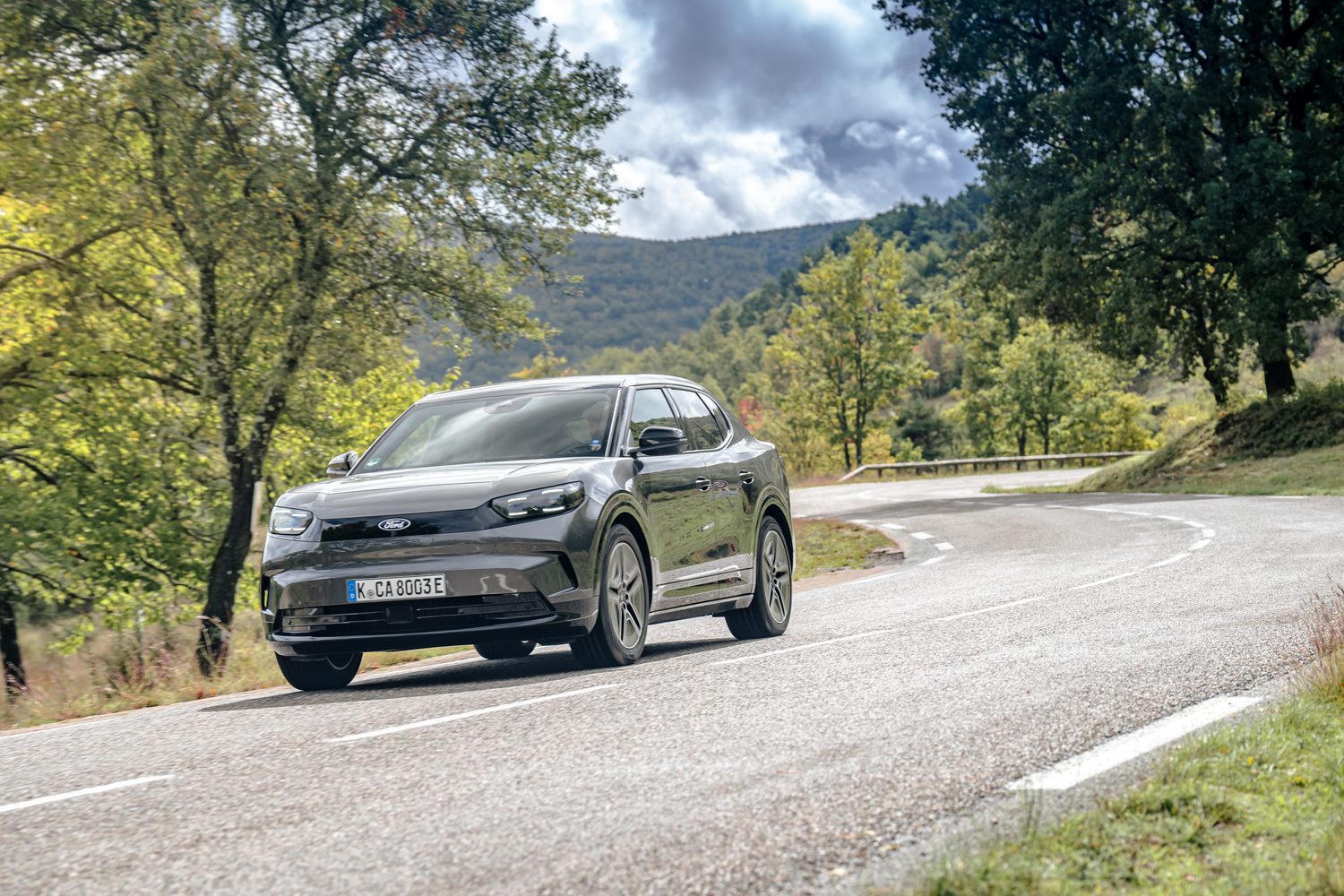
If you brake hard into a corner and then get back on the accelerator pedal quickly, there is a hint at the rear-drive platform underneath, but the stability control is rapidly deployed to prevent any unruly slippage. It won’t thrill keen drivers, perhaps, but it can cover ground at a decent pace when required, and through it all the body control is exceptionally good.
Ford has managed that without resorting to overly firm suspension, so the Capri rides quite well in most scenarios. Our test car featured the 20-inch wheels and coped admirably even when we drove over poor road surfaces. That bodes well for cars sitting on the 19-inch alloys with more cushioning tyre sidewalls to enhance the comfort further.
Special mention goes to those responsible for the setup of the Capri’s brakes. Alot of electric cars (and hybrids for that matter) suffer from inconsistent brake-pedal feel due to the need to mix regular friction braking with recharging the battery under deceleration through brake energy regeneration. The Capri has no such issues, making it more satisfying to drive in the process. There is a “B” option on the drive selector to enhance the level of regen used, though I reckon the car feels more natural to drive without this.
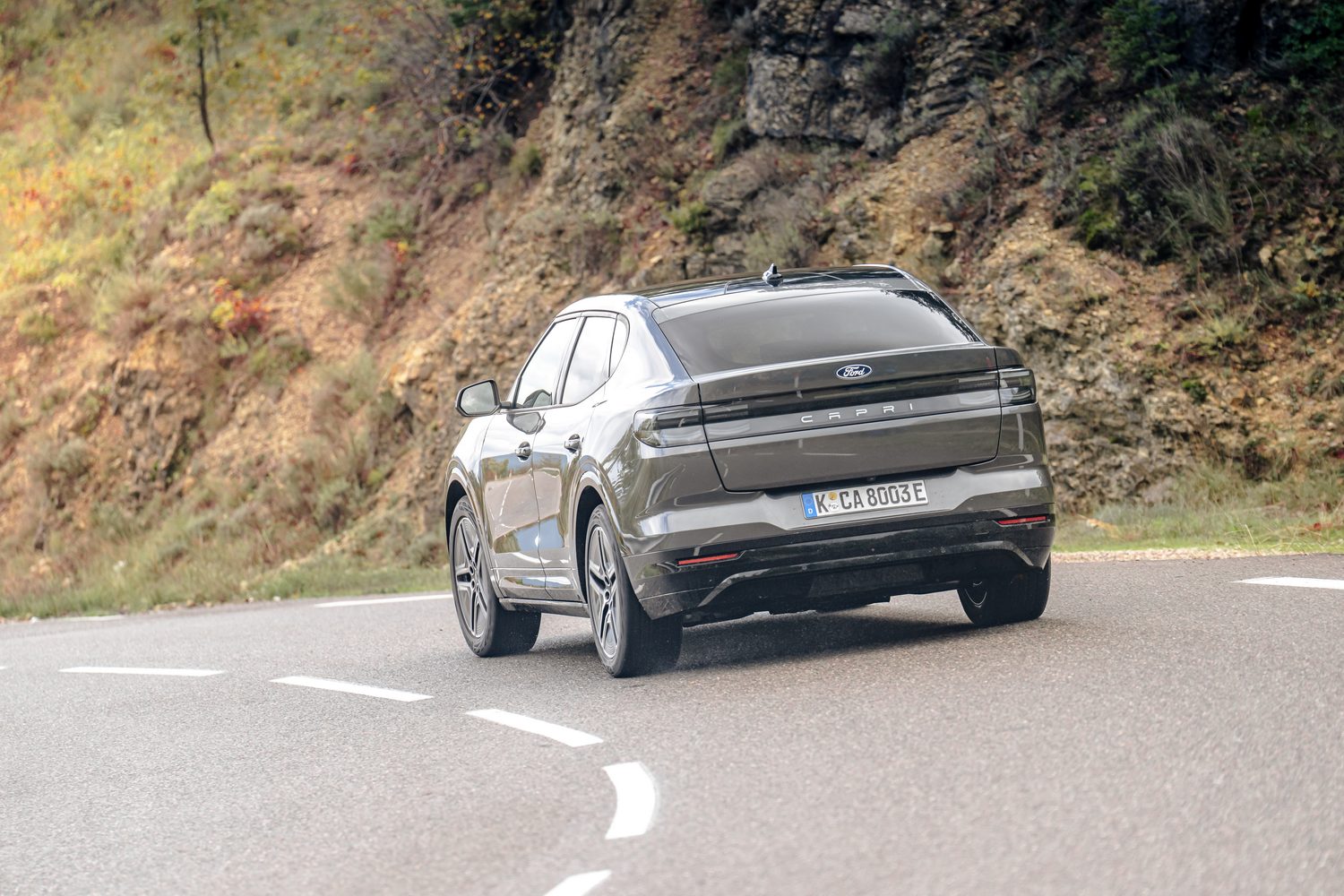
Other driving settings include Eco, Comfort, Sport and Individual modes, though there’s not a dramatic difference between them all other than varying degrees of responsiveness from the powertrain and weighting of the power steering. There’s no adjustable damping in the Capri for now.
One final aspect worth touching on is the Capri’s refinement. Without resorting to double-glazed side glass or engine-mimicking sounds it is remarkably quiet on the move, keeping wind roar and road noise at bay, and the electric motor isn’t audible either. This is a particularly smooth EV, giving it a premium feel on the road.
What’s the electric range of the Ford Capri?
The range hero of the Capri lineup is the Select model fitted with the 77kWh battery. It can officially travel up to 627km on a charge, thanks to average energy consumption of 13.3kWh/100km. Opt for the higher-spec Premium car and the range drops to 598km (based on 14kWh/100km). Our test was inconclusive on that front, displaying an average of 19kWh/100km when driven through a mix of busy traffic and flowing country roads, but then much better than that on a section of motorway.
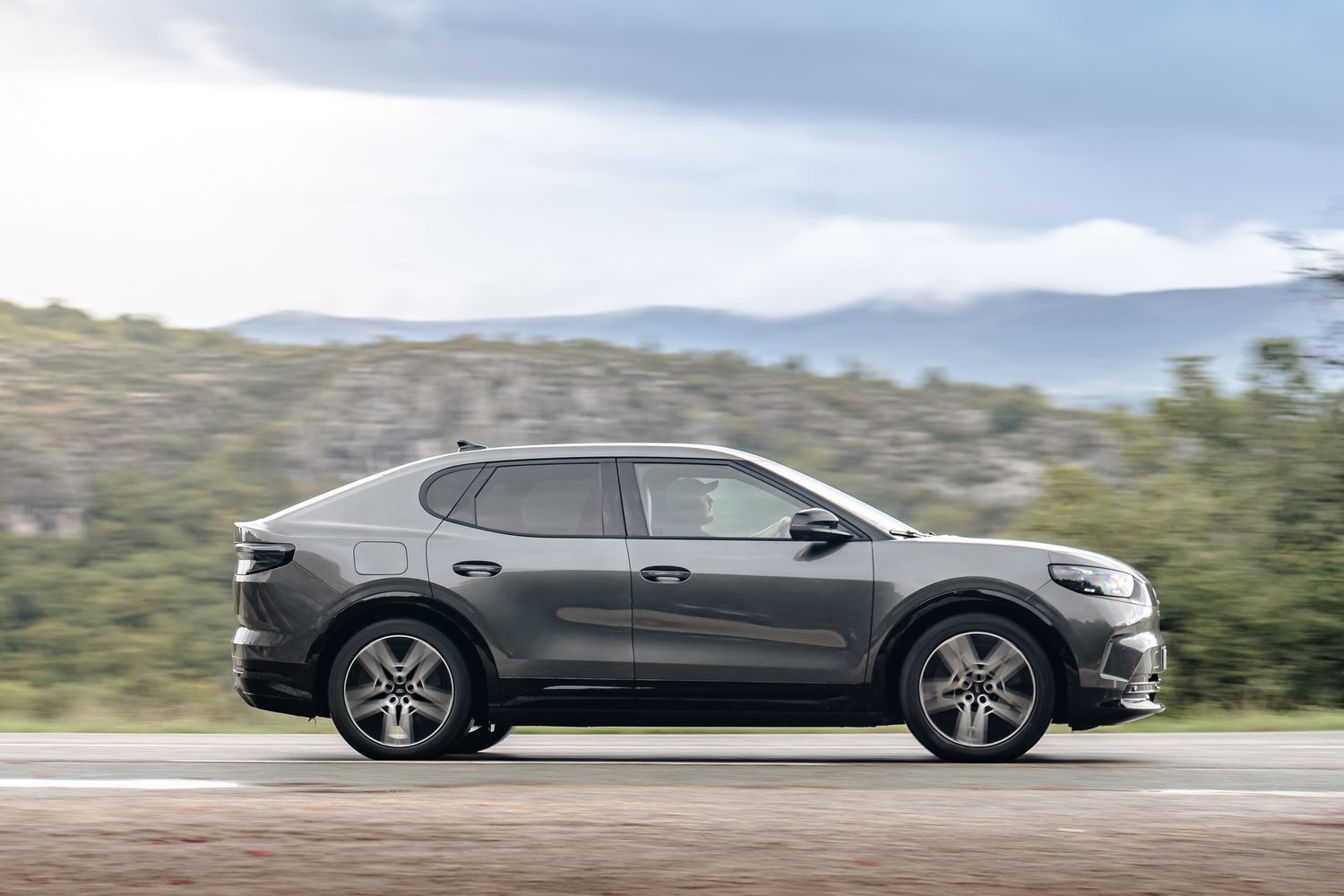
If you’re keeping the purchase price down and sticking with the 52kWh battery, the official range is 391km for the Select or 371km for the Premium.
Charing speeds vary by battery, too. Oddly, the smaller battery can be charged a little faster on DC connections, at up to 145kW, while the big battery is limited to 135kW. AC charging of 11kW is supported.
The reasons you’d buy an electric Ford Capri
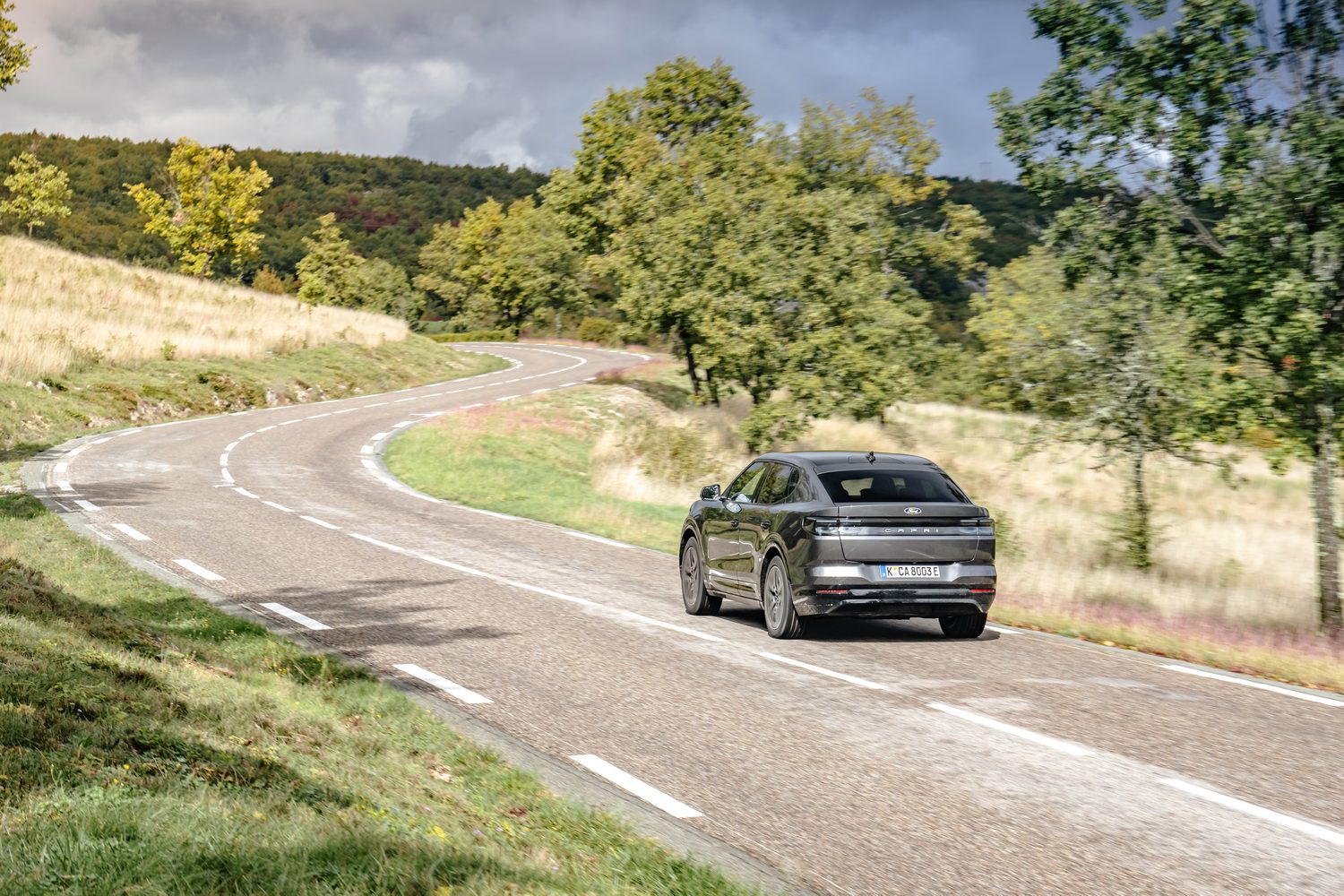
Despite the association with an undeniably legendary car, the new Capri is unlikely to appeal to fans of the original or those looking for a “sports car for the family” as Ford puts it. Nonetheless, it does offer EV buyers another option in the marketplace, and it is certainly a well-developed and practical car that deserves consideration alongside the myriad other similarly sized, vaguely SUV-like electric cars on offer today. Ford loyalists will be glad the company is expanding its electric portfolio.
Ask us anything about the electric Ford Capri
If there’s anything about the electric Ford Capri we’ve not covered, or you’d like advice in choosing between it and other cars, you can avail of our (completely free) expert advice service via the Ask Us Anything page.

